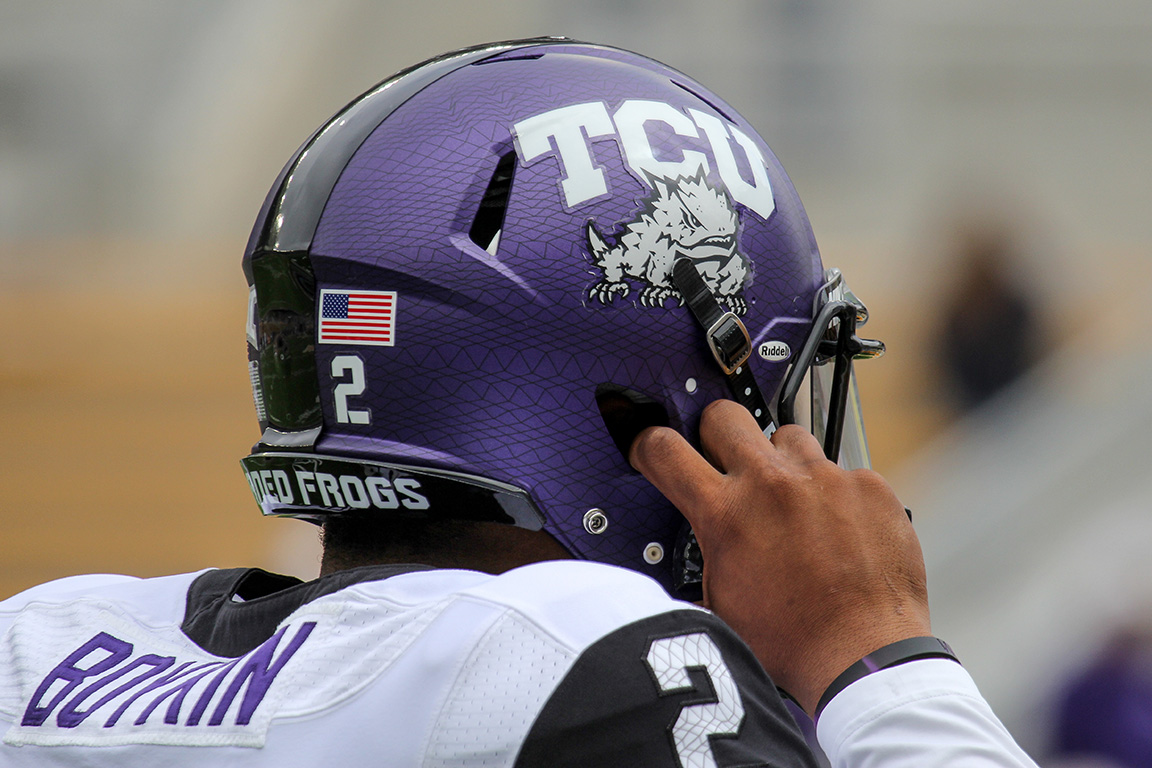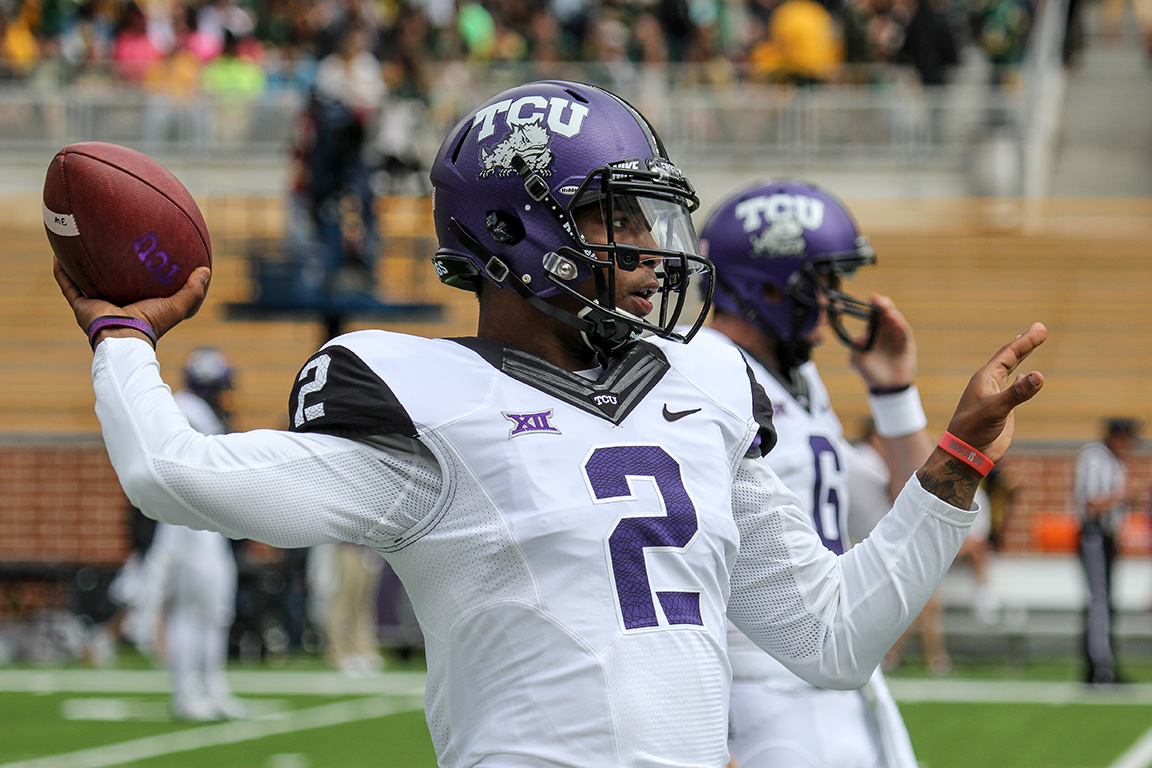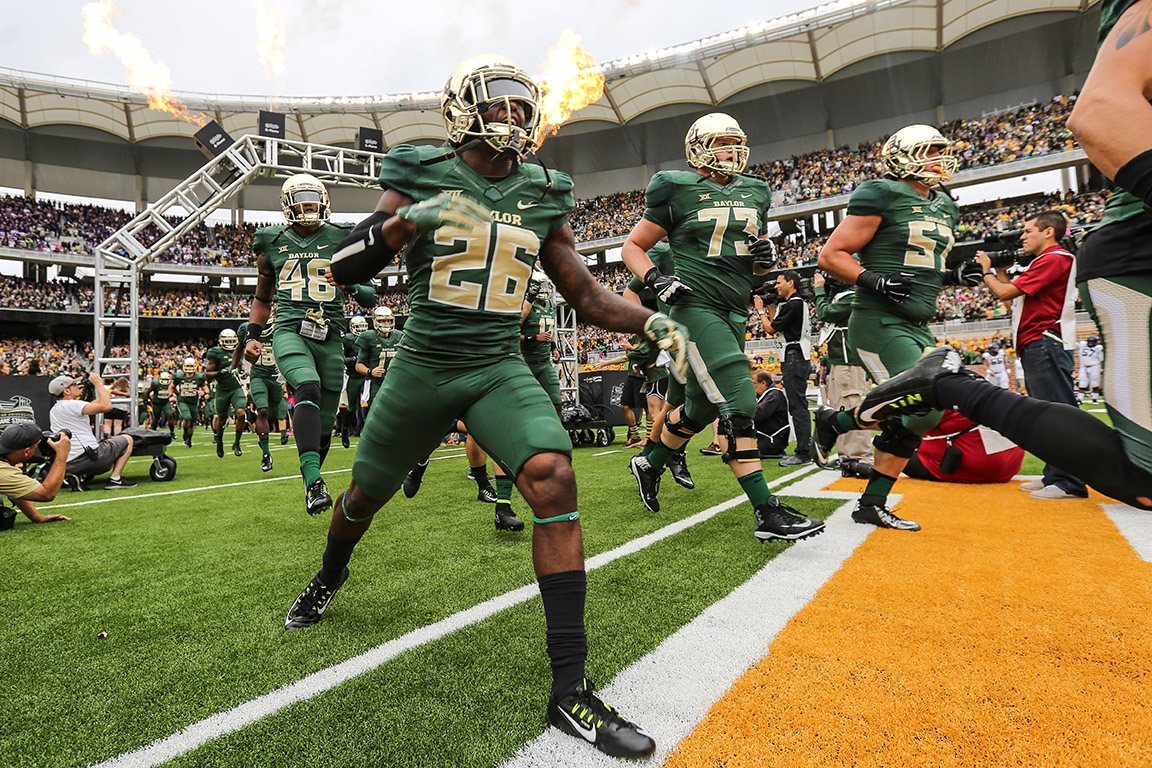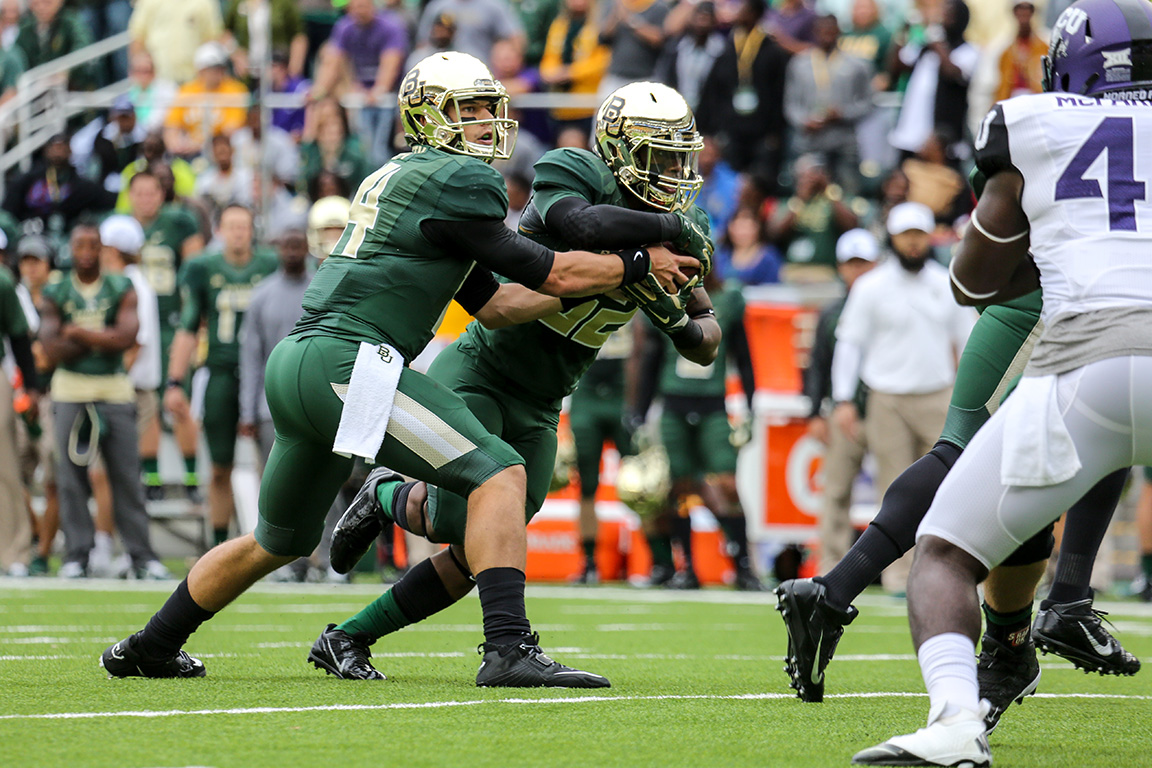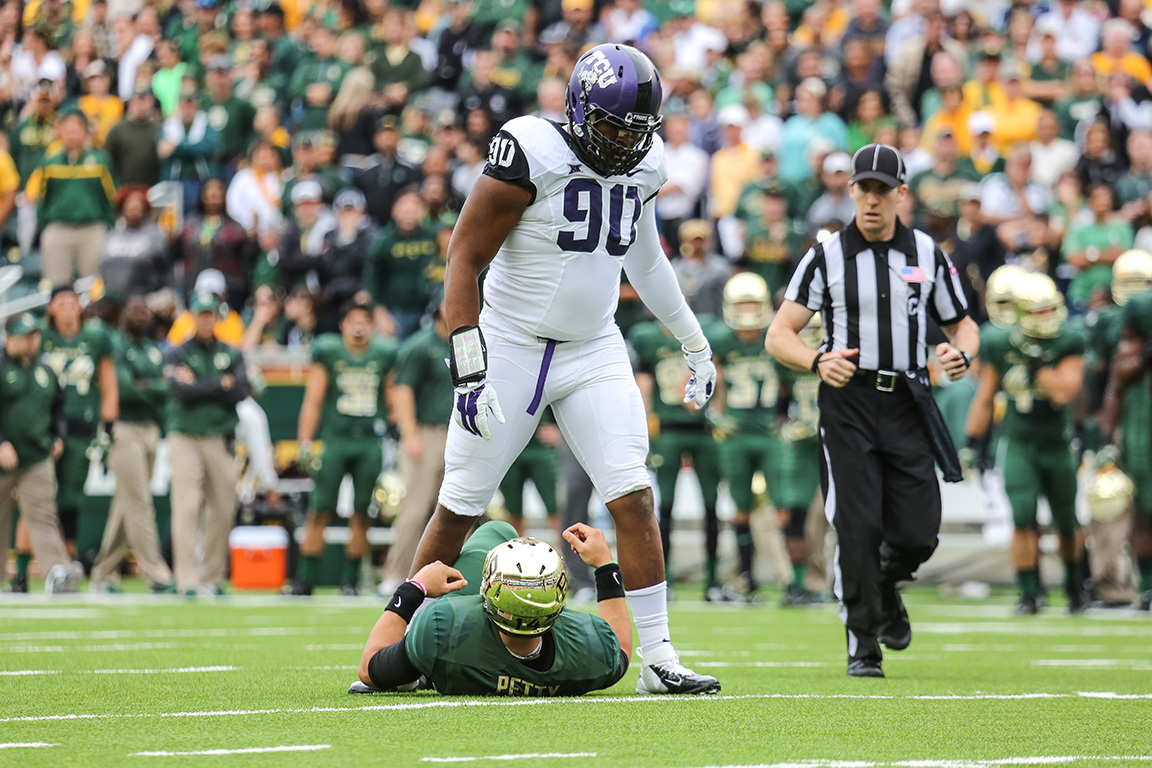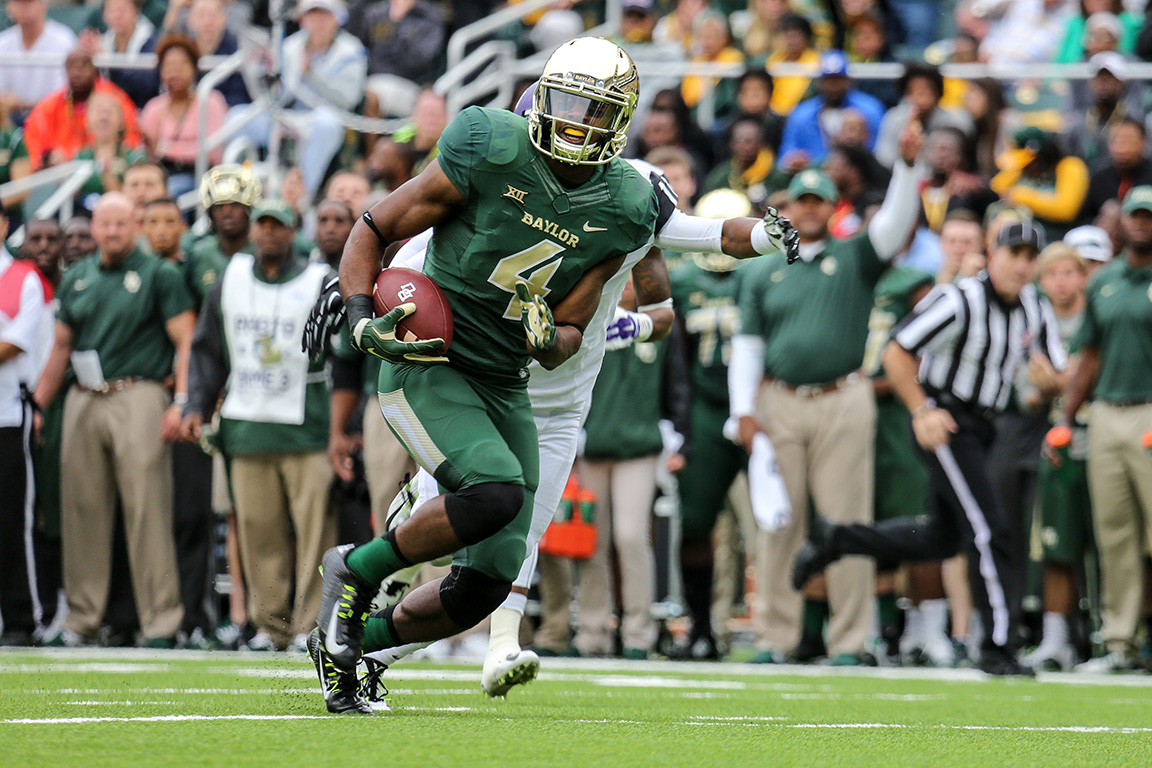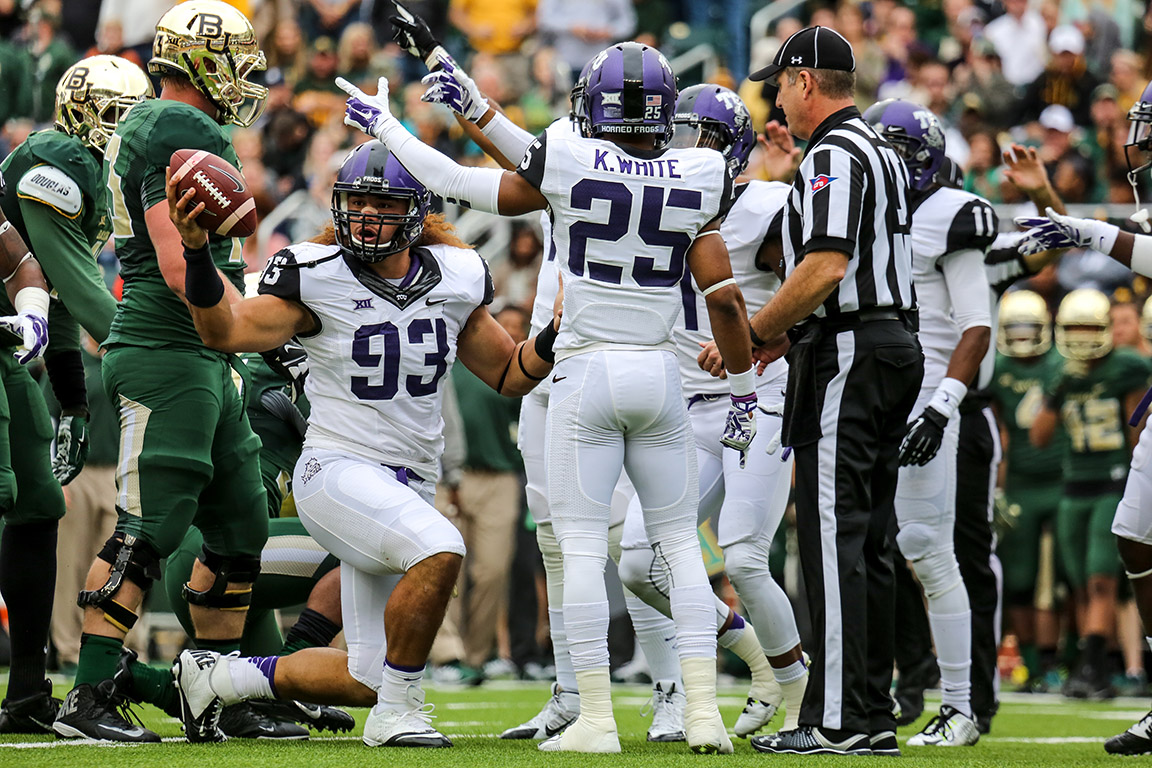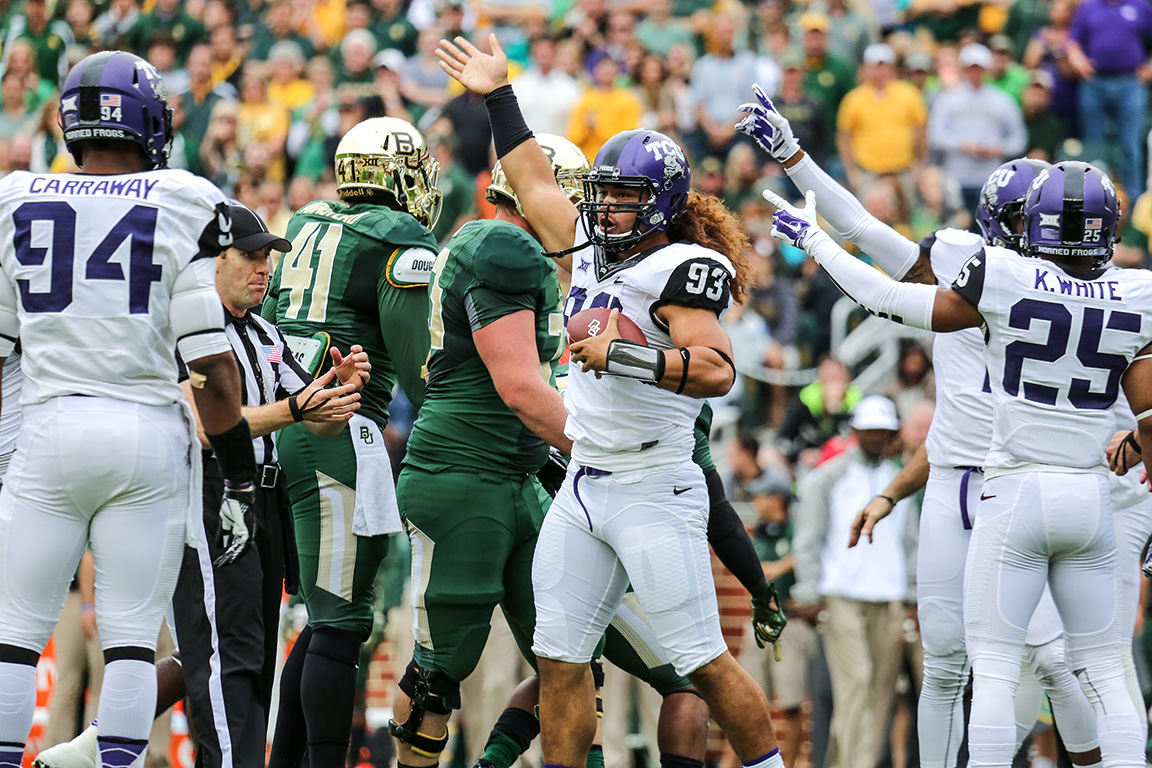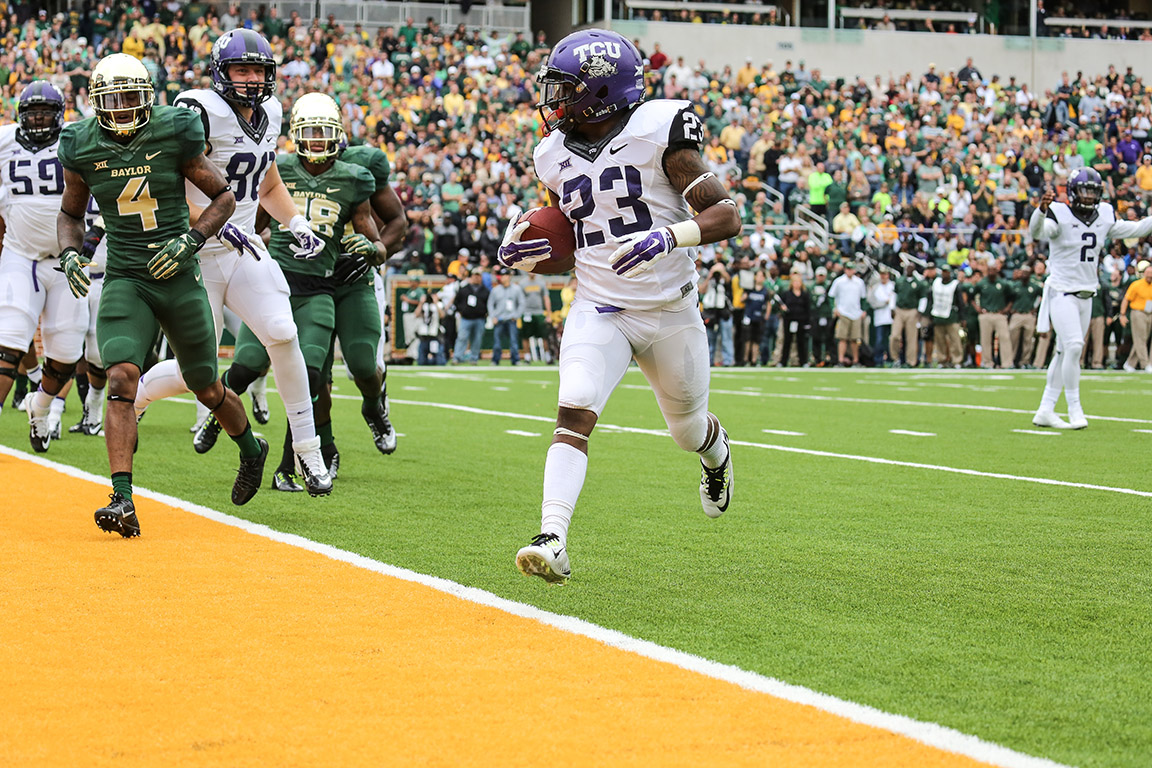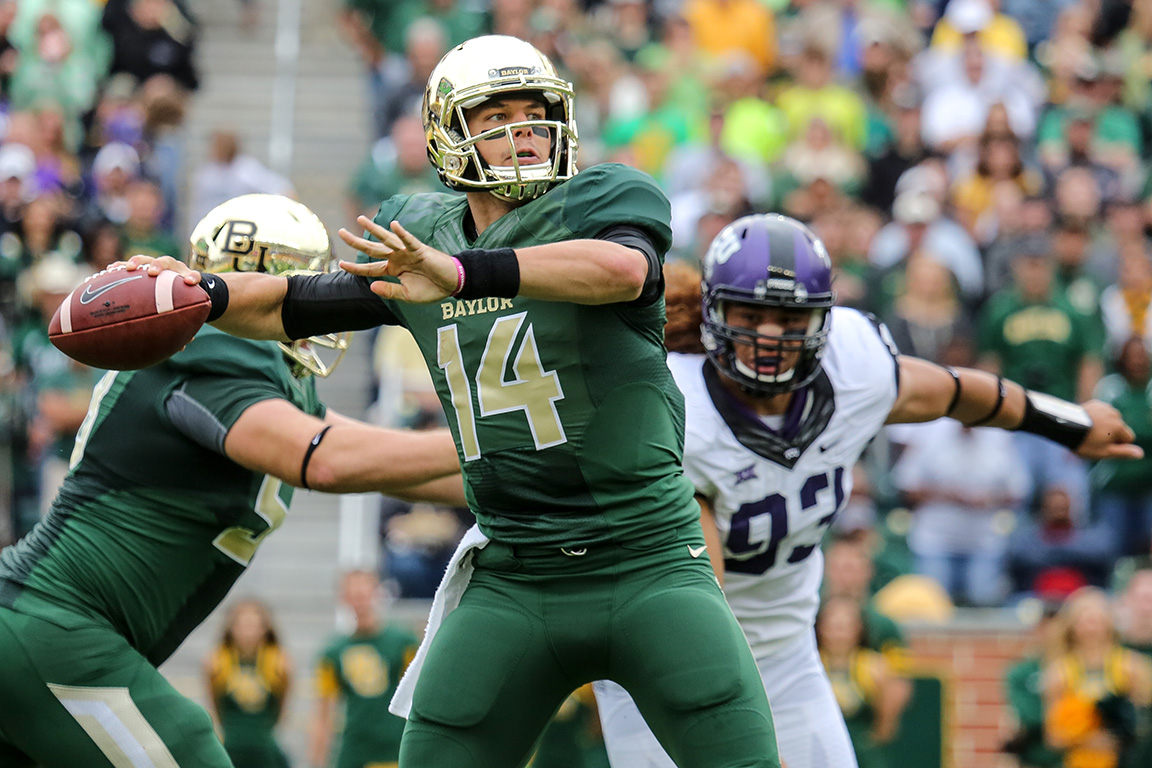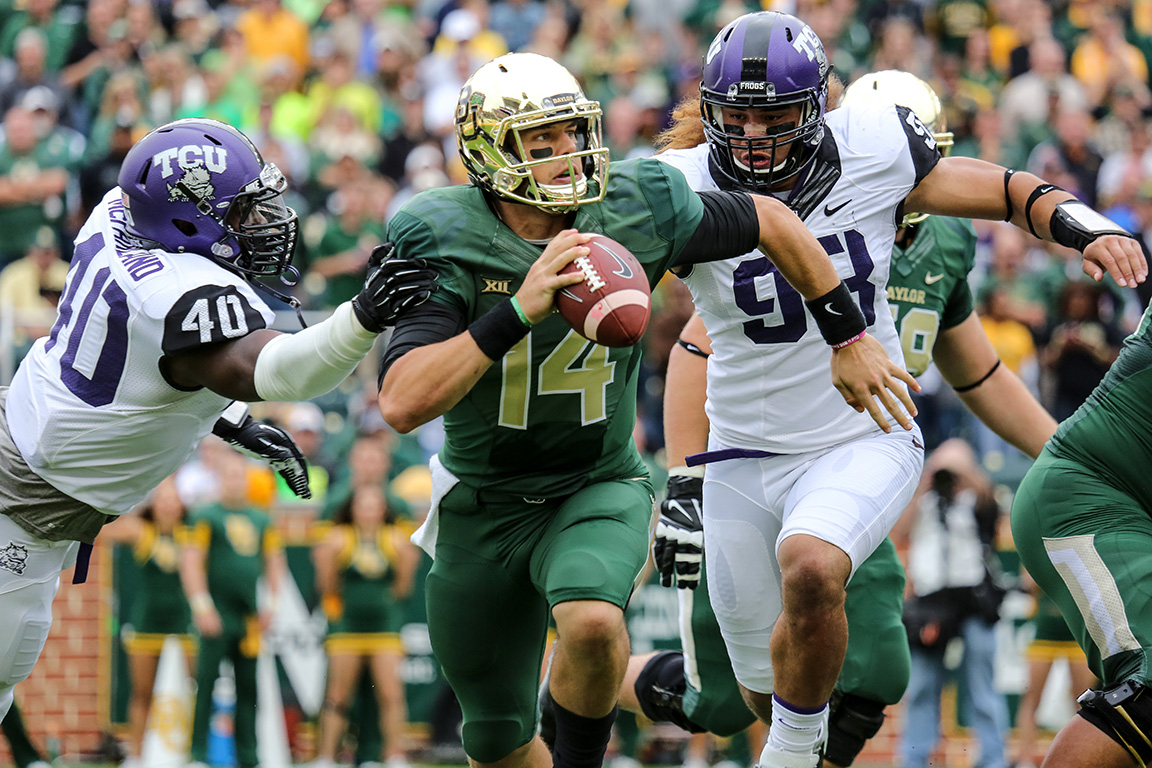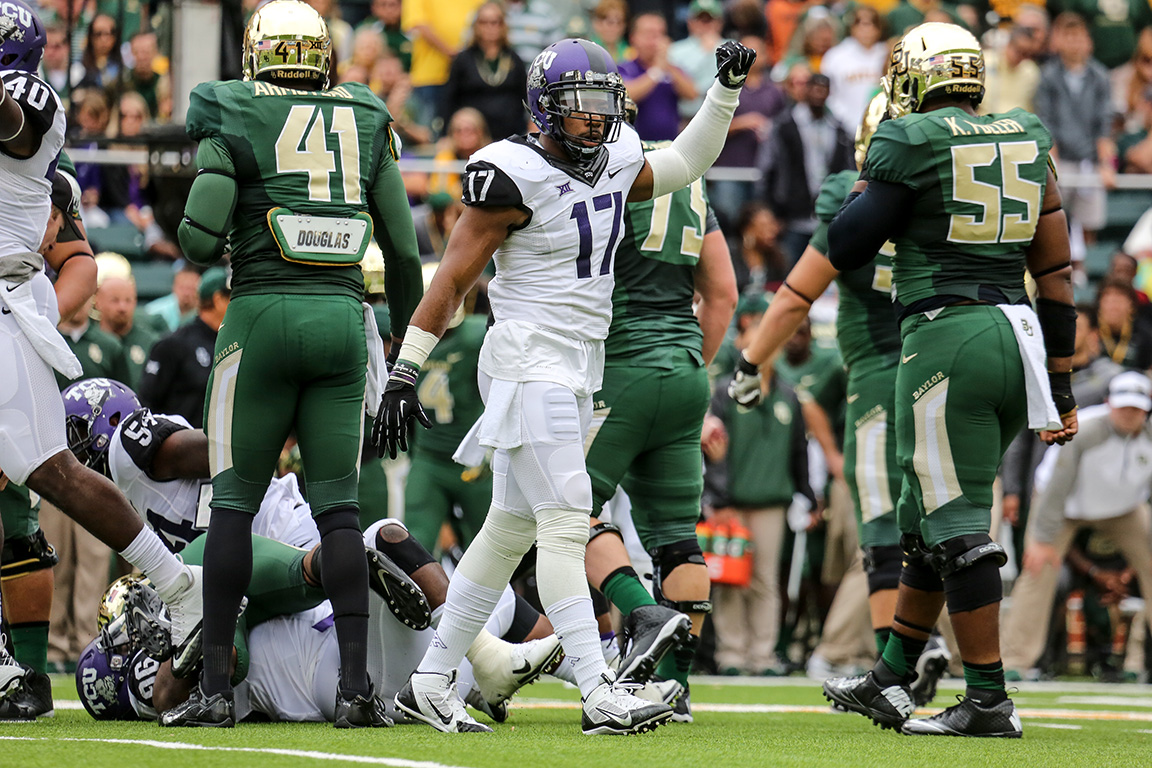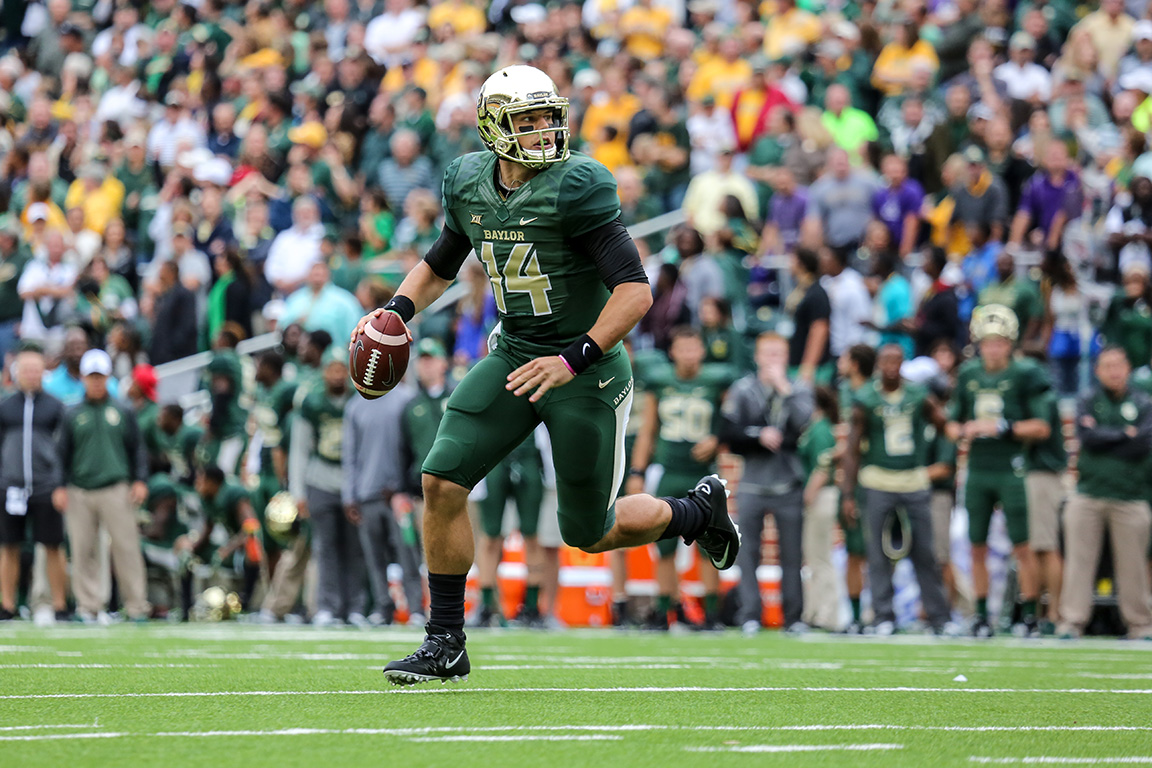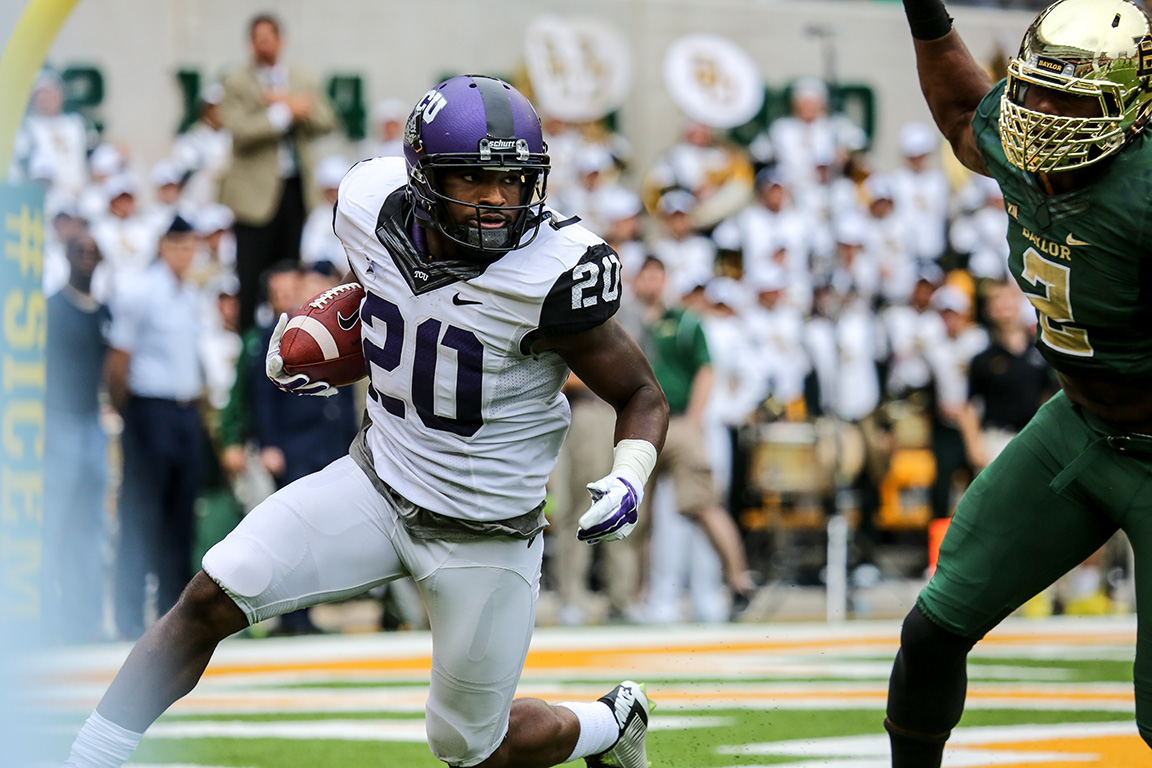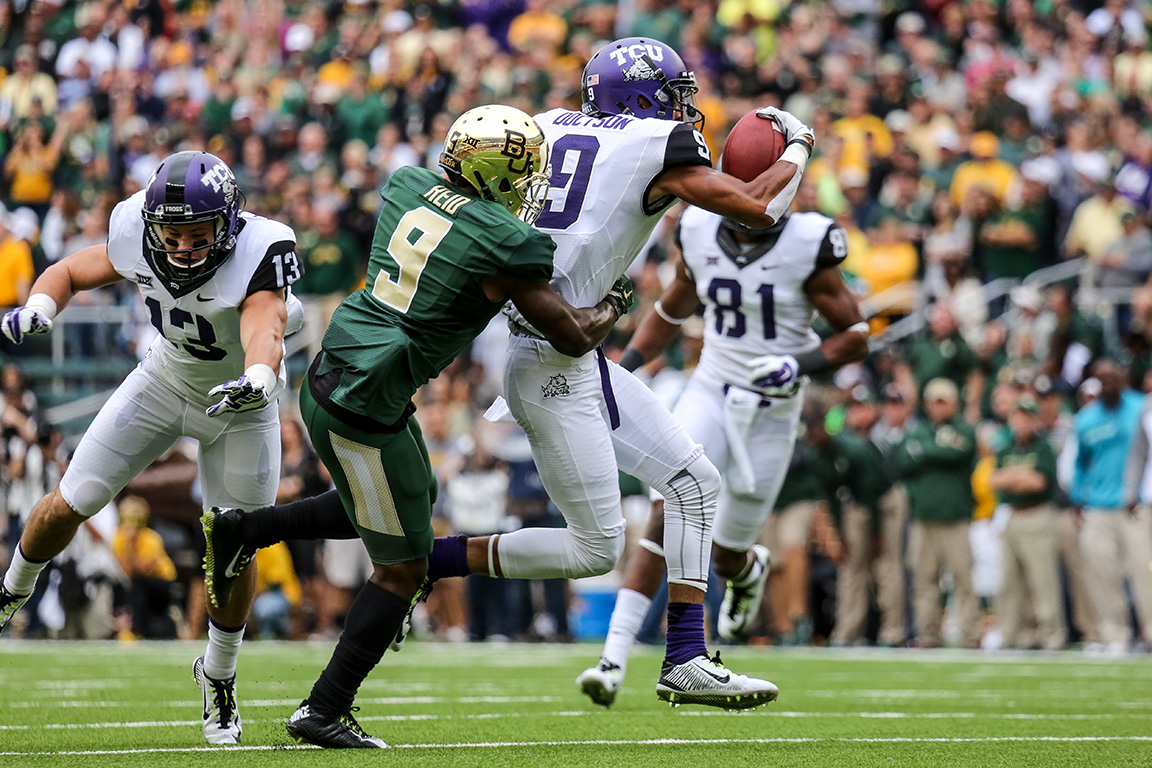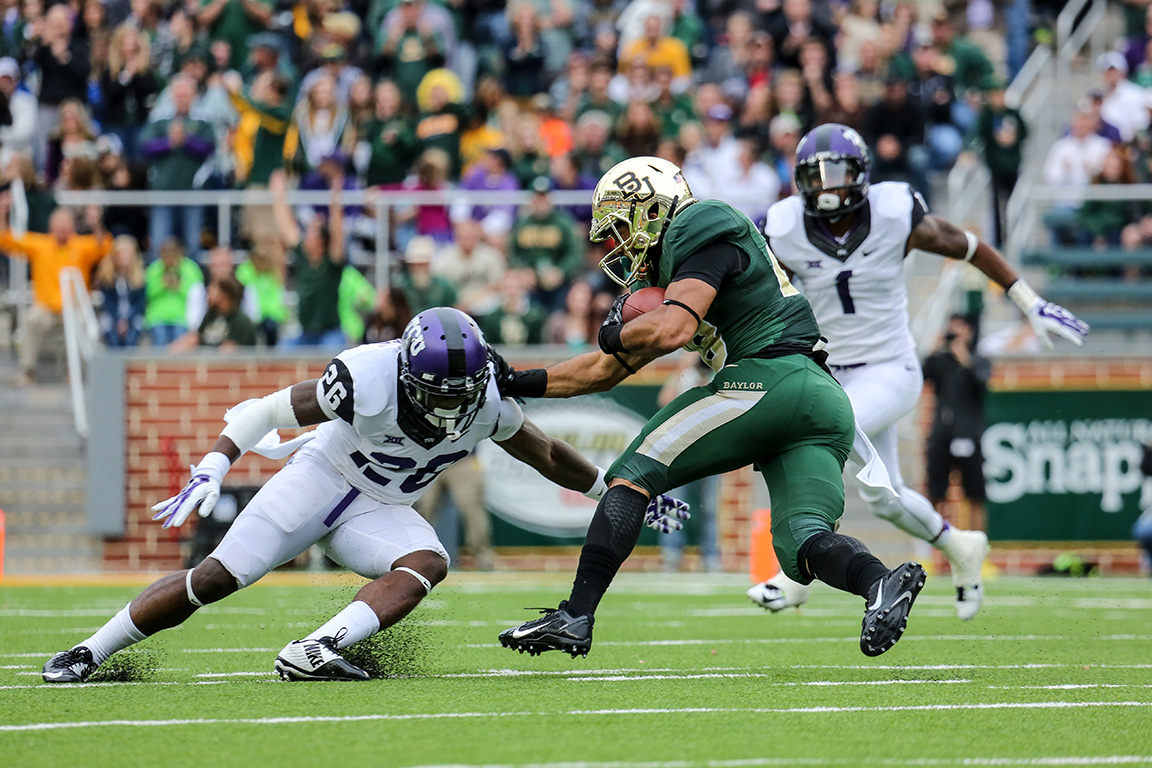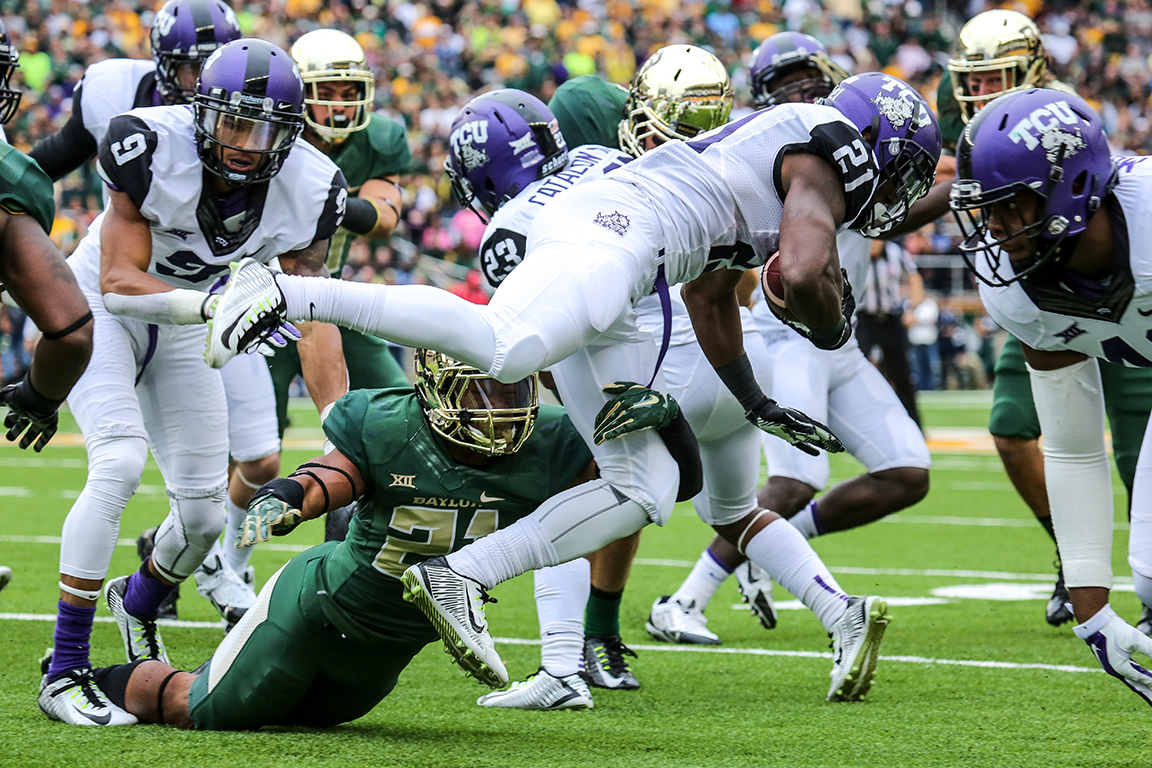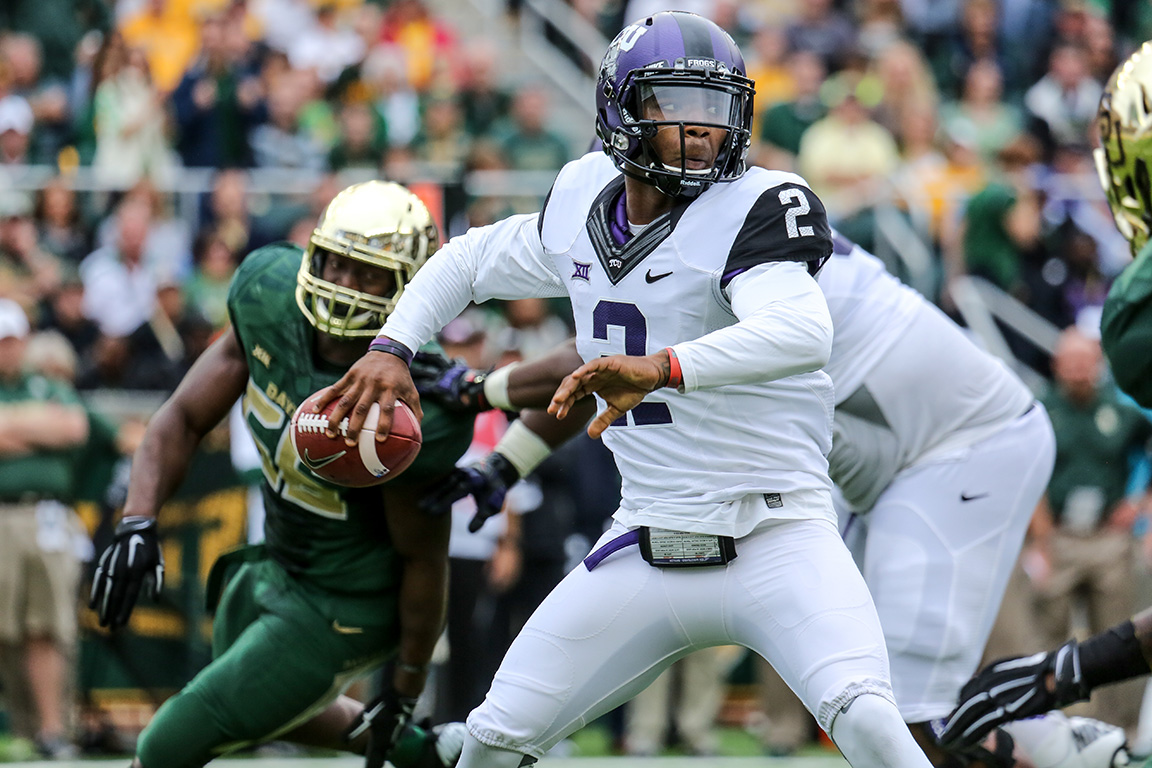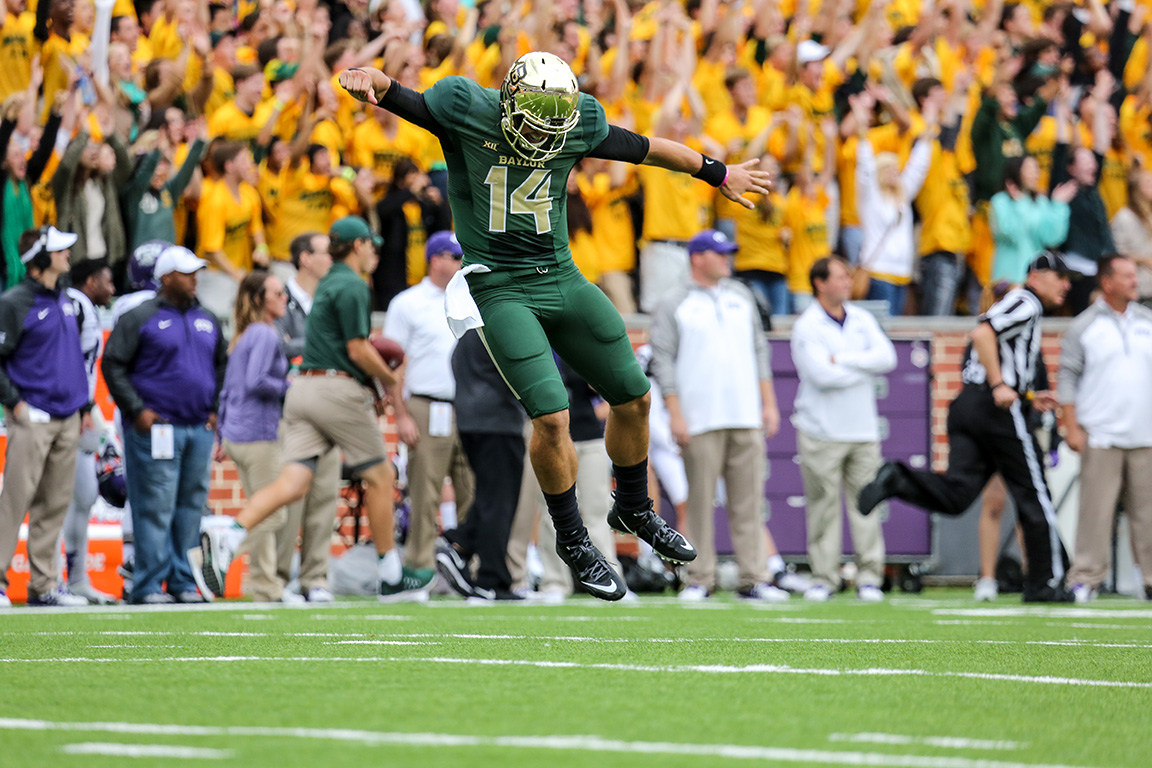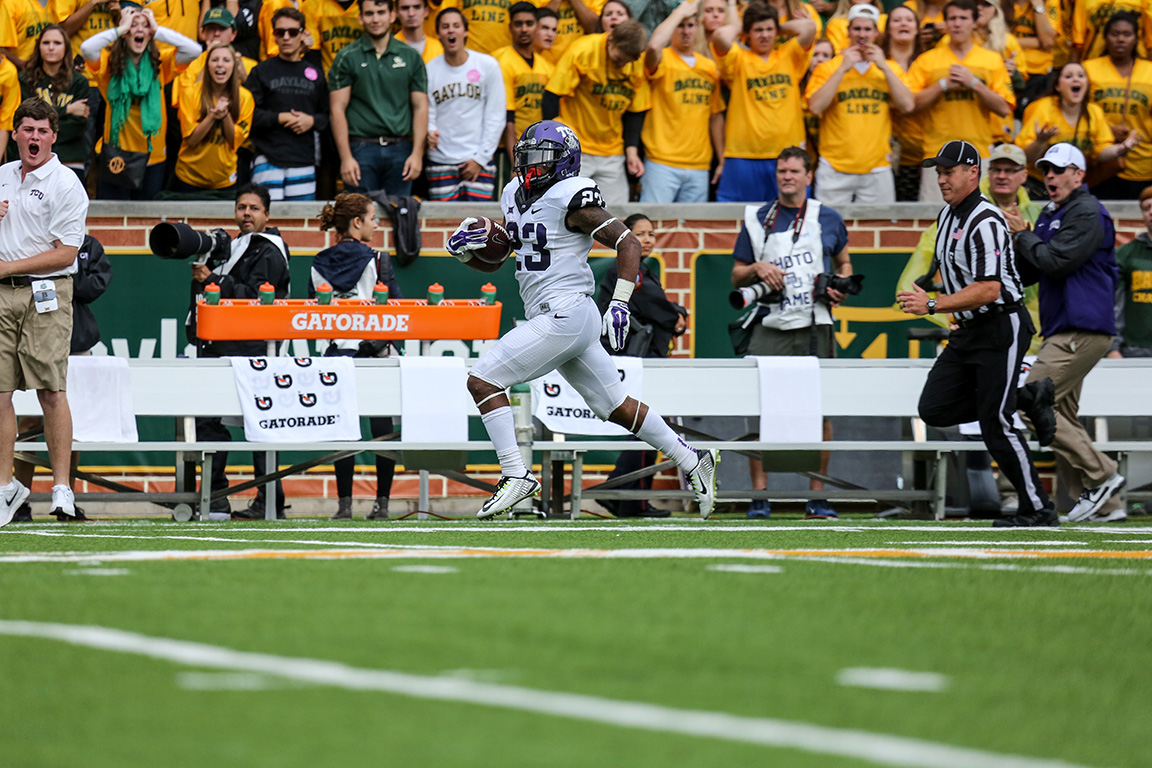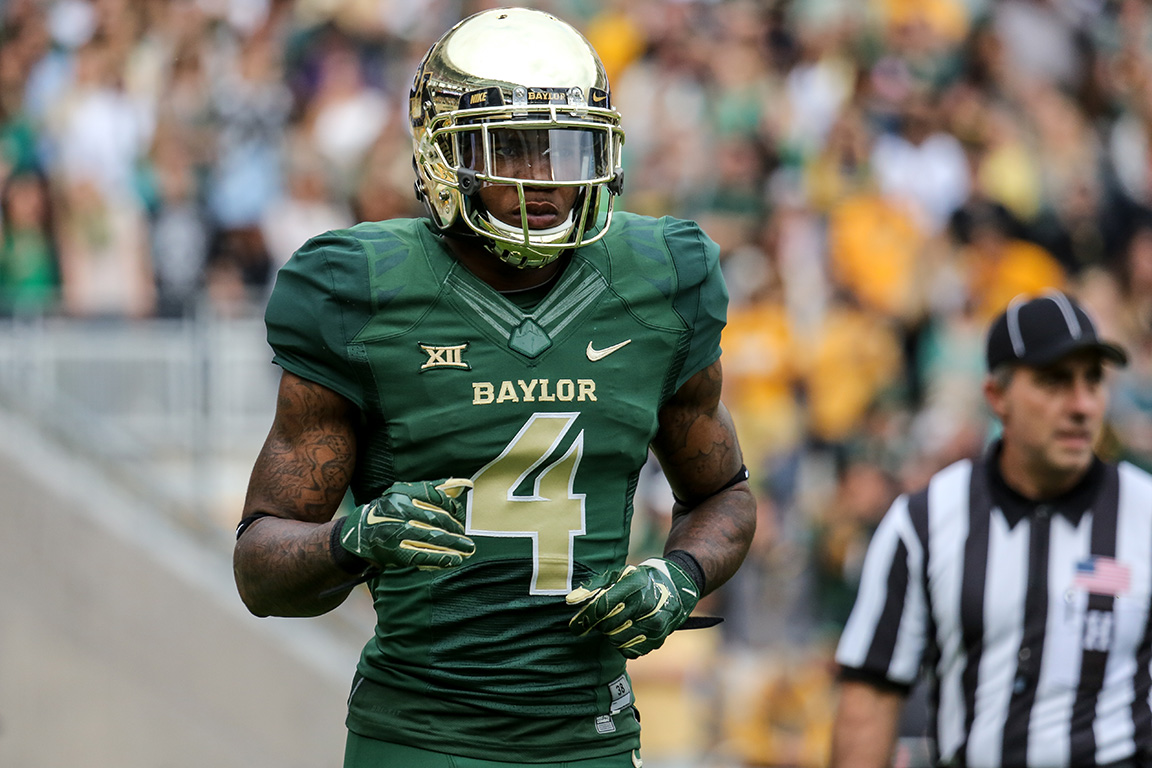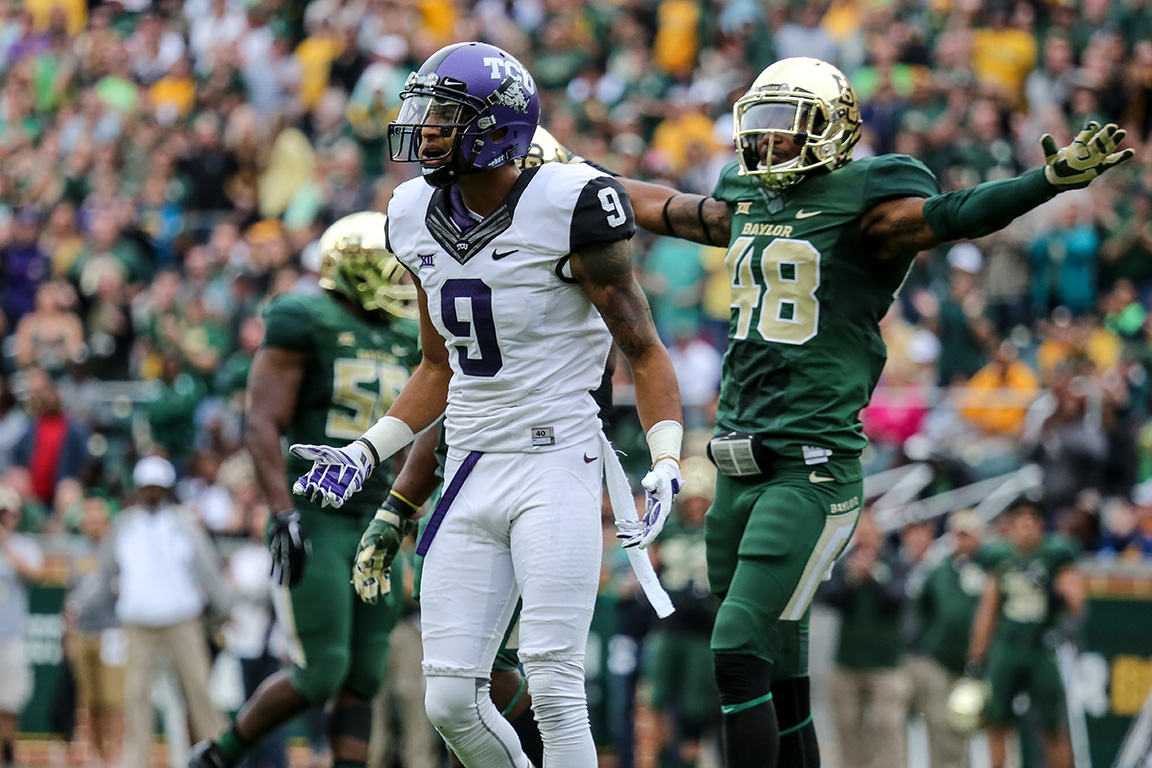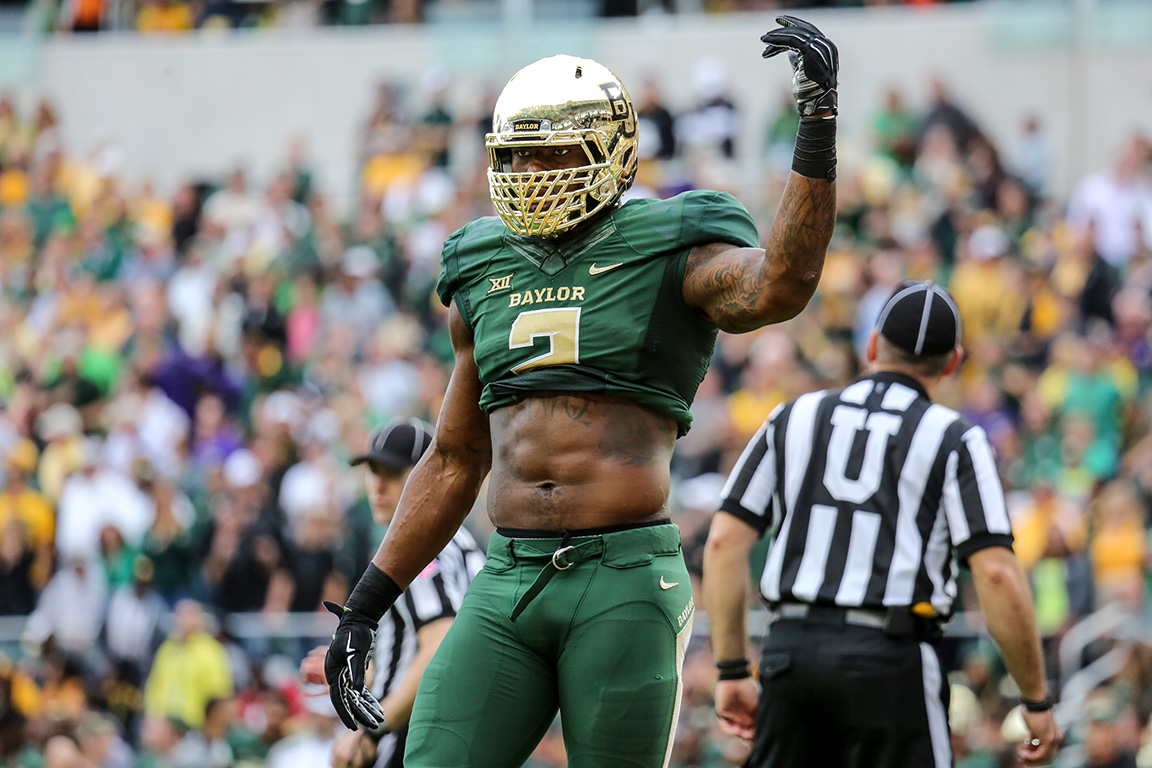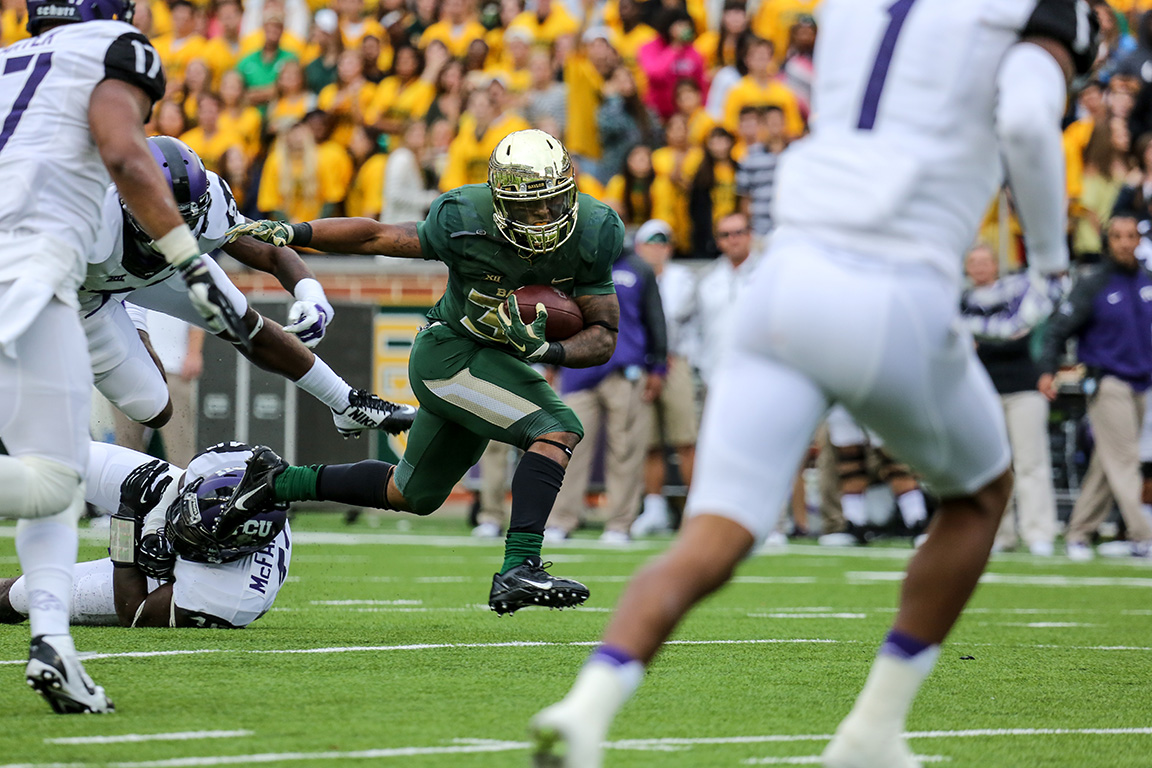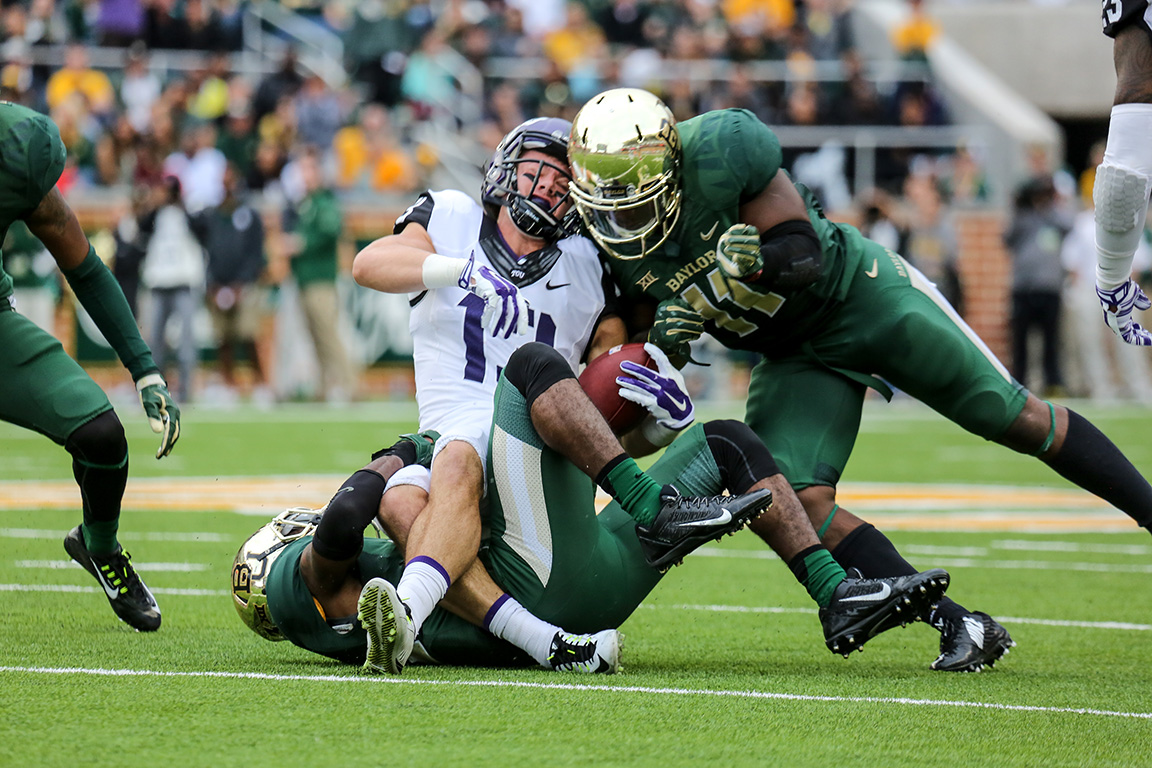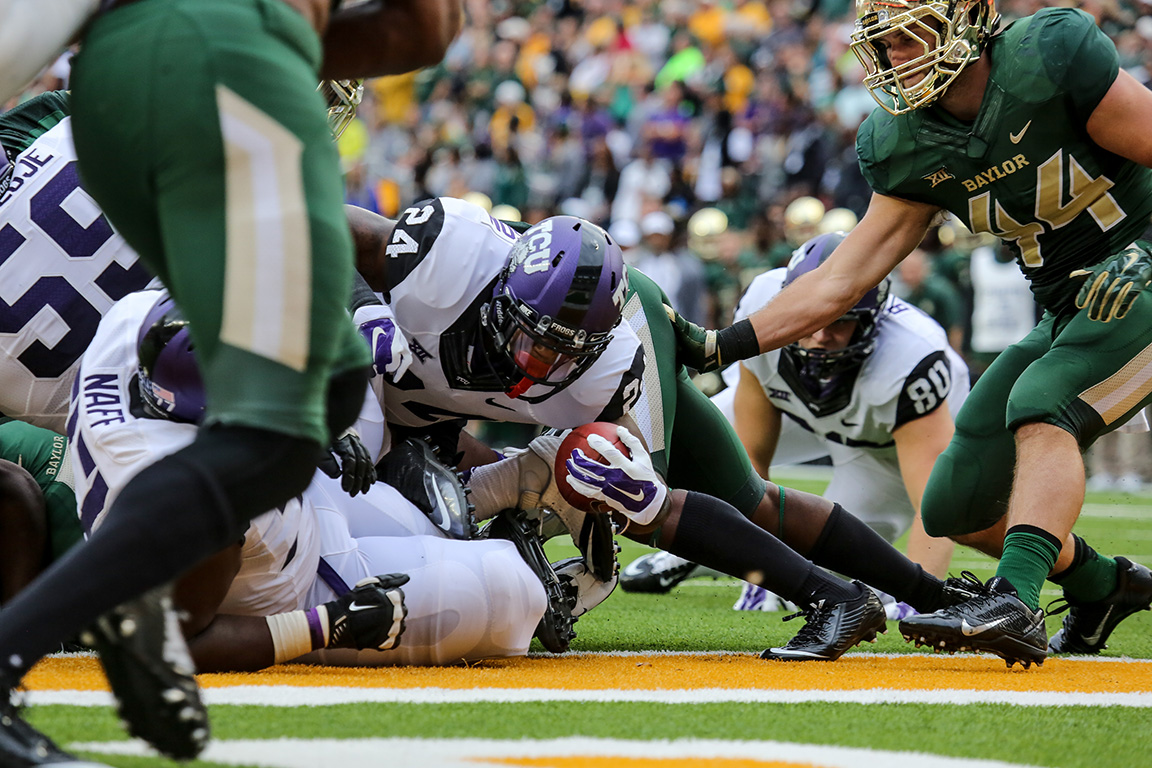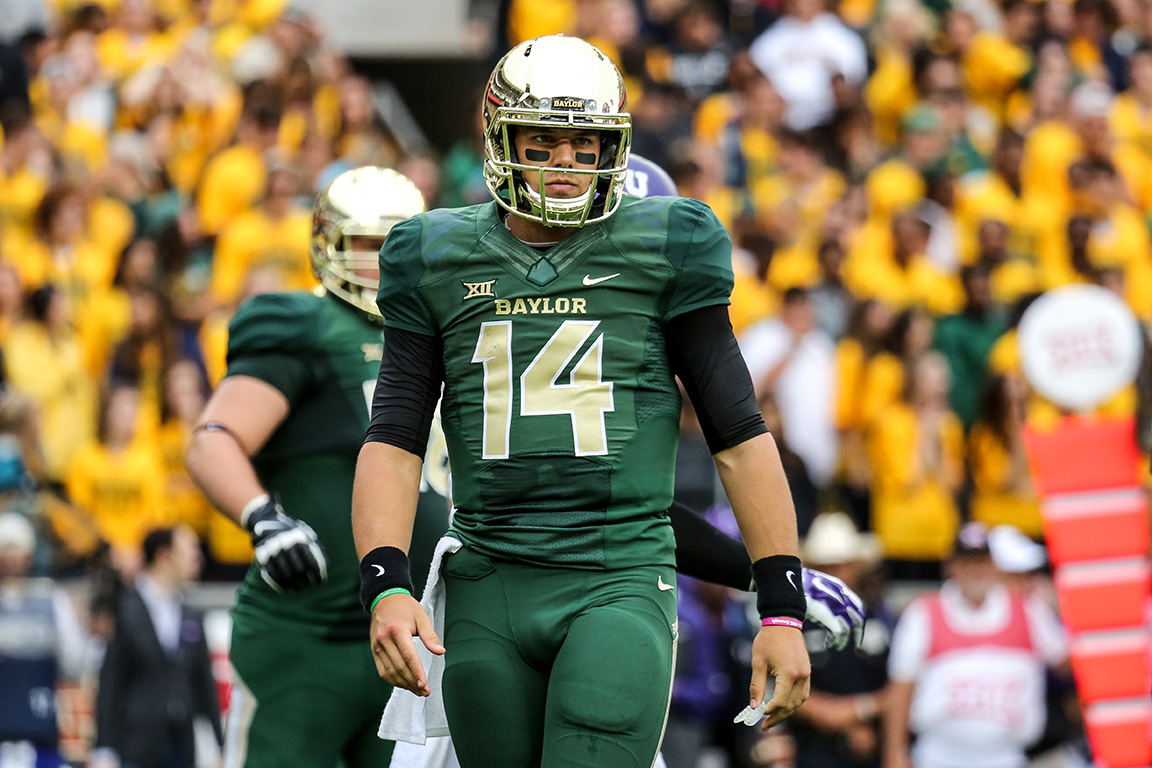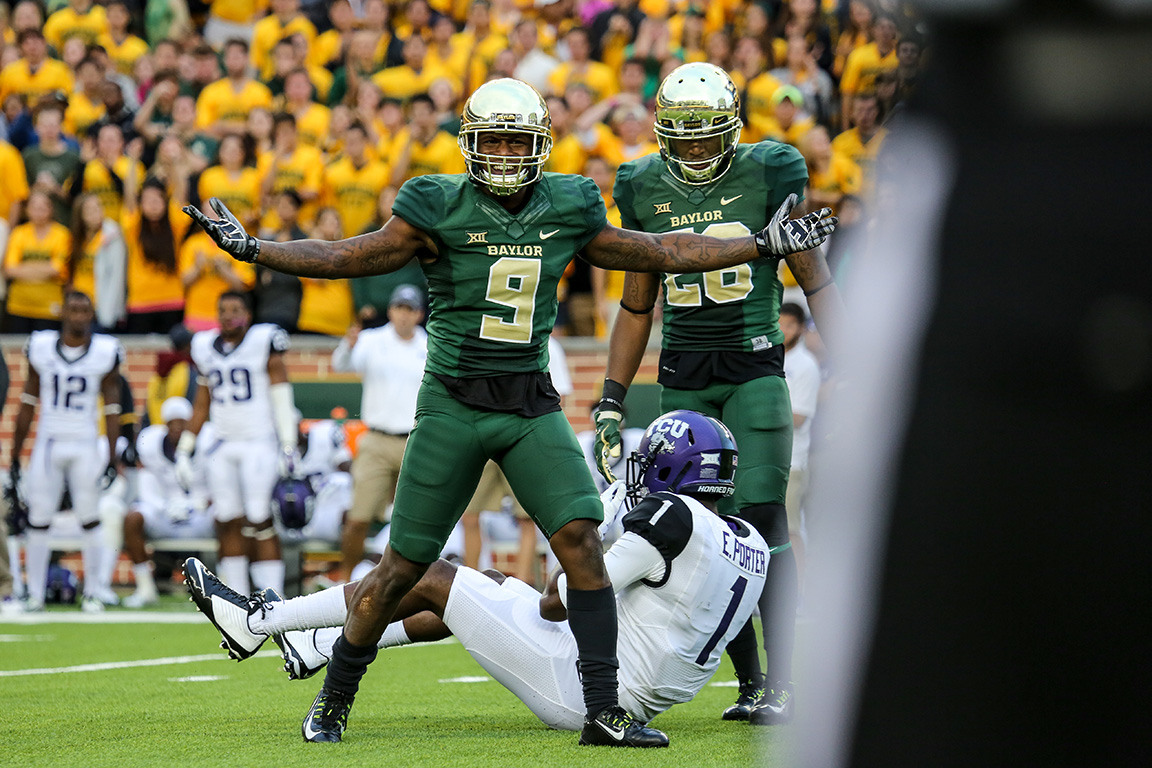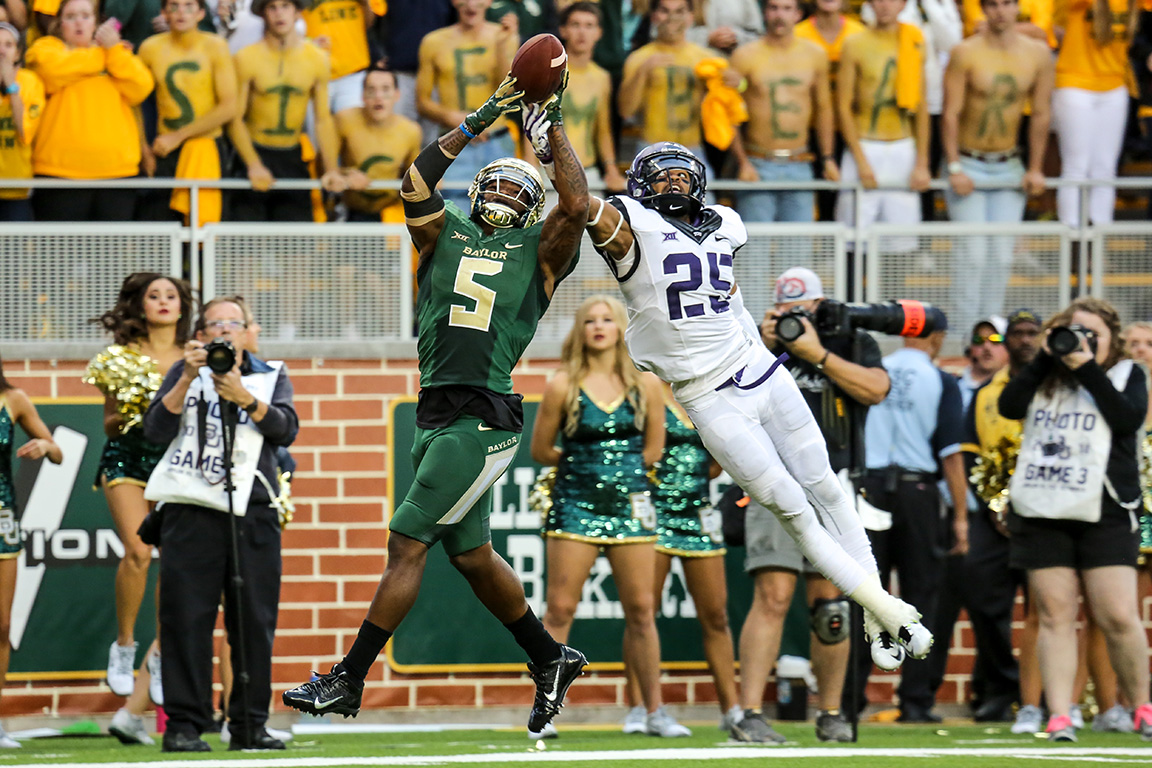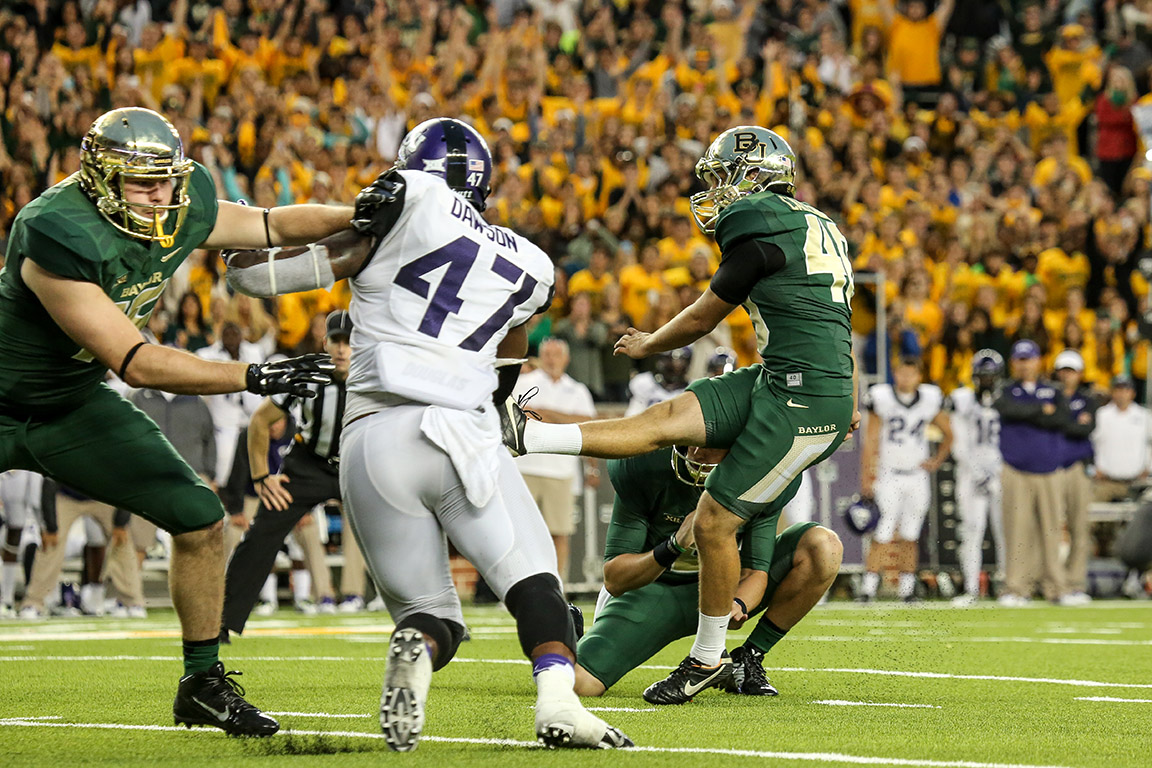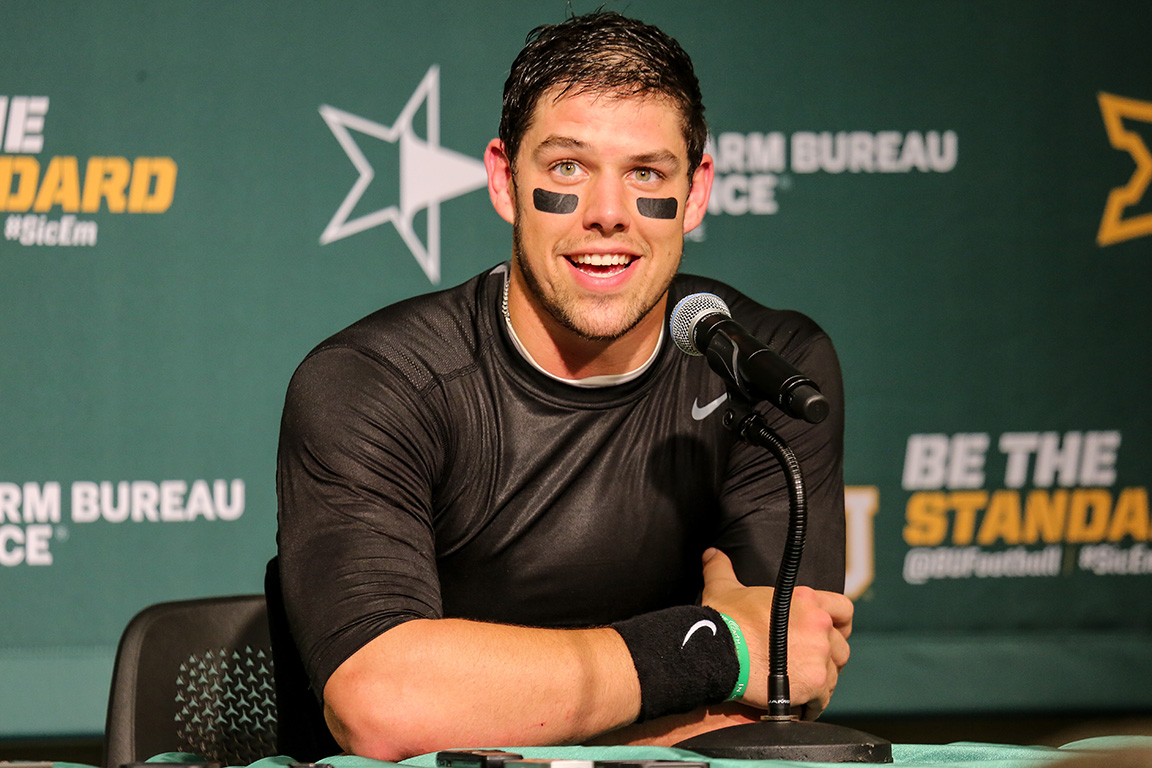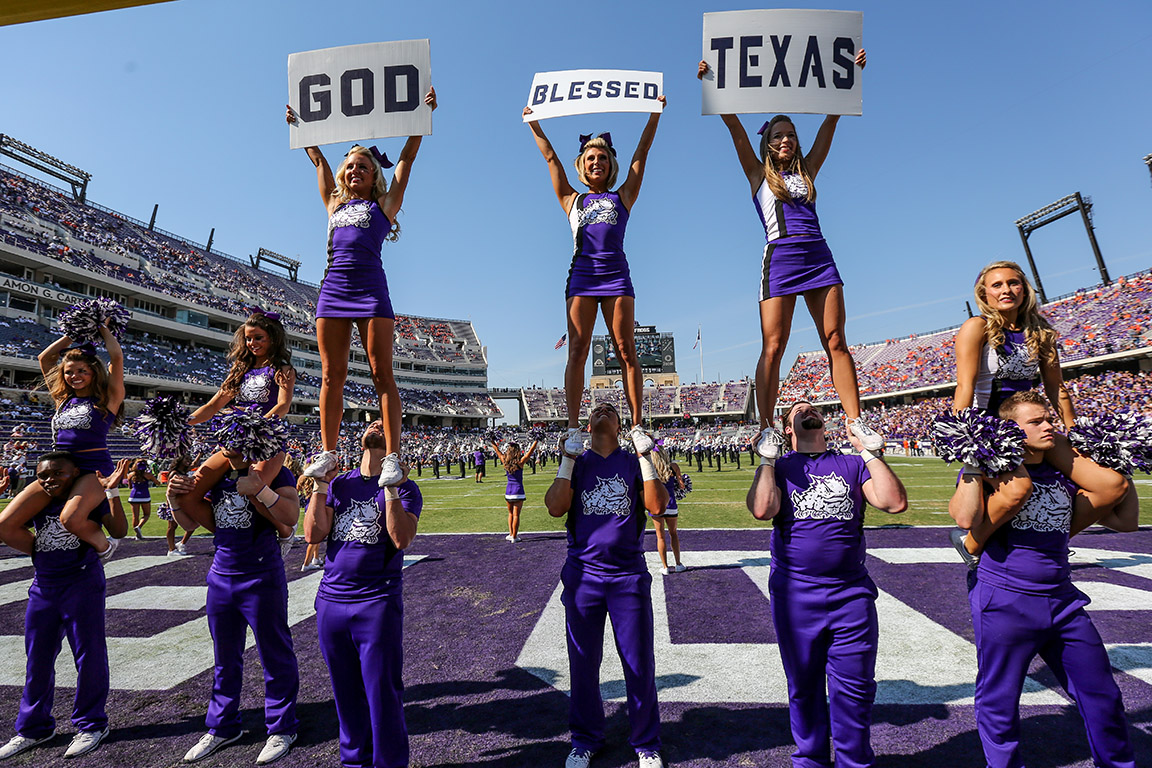
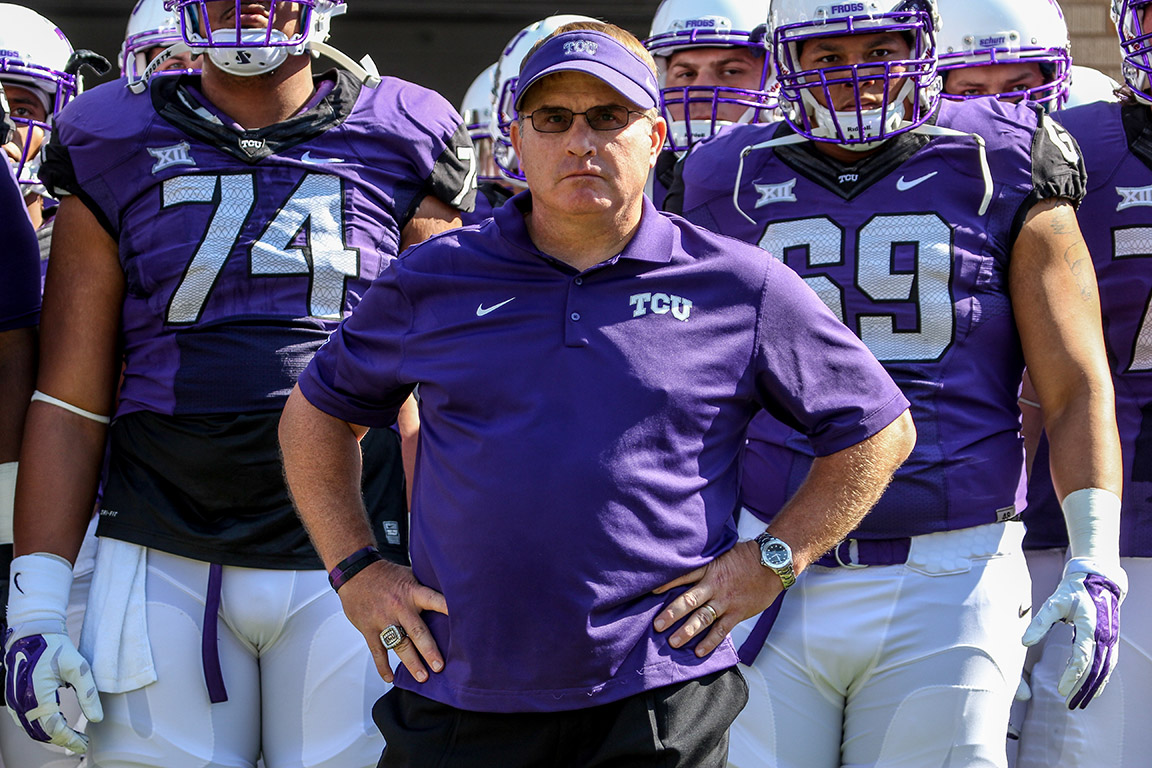
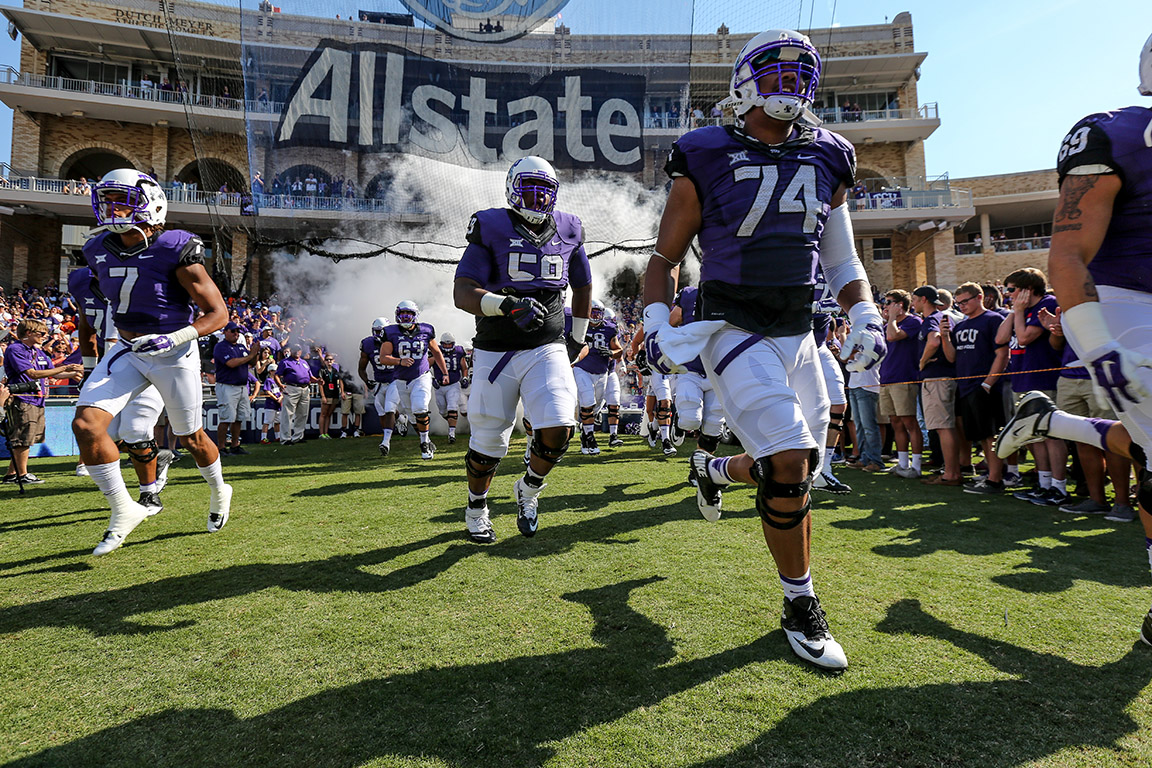
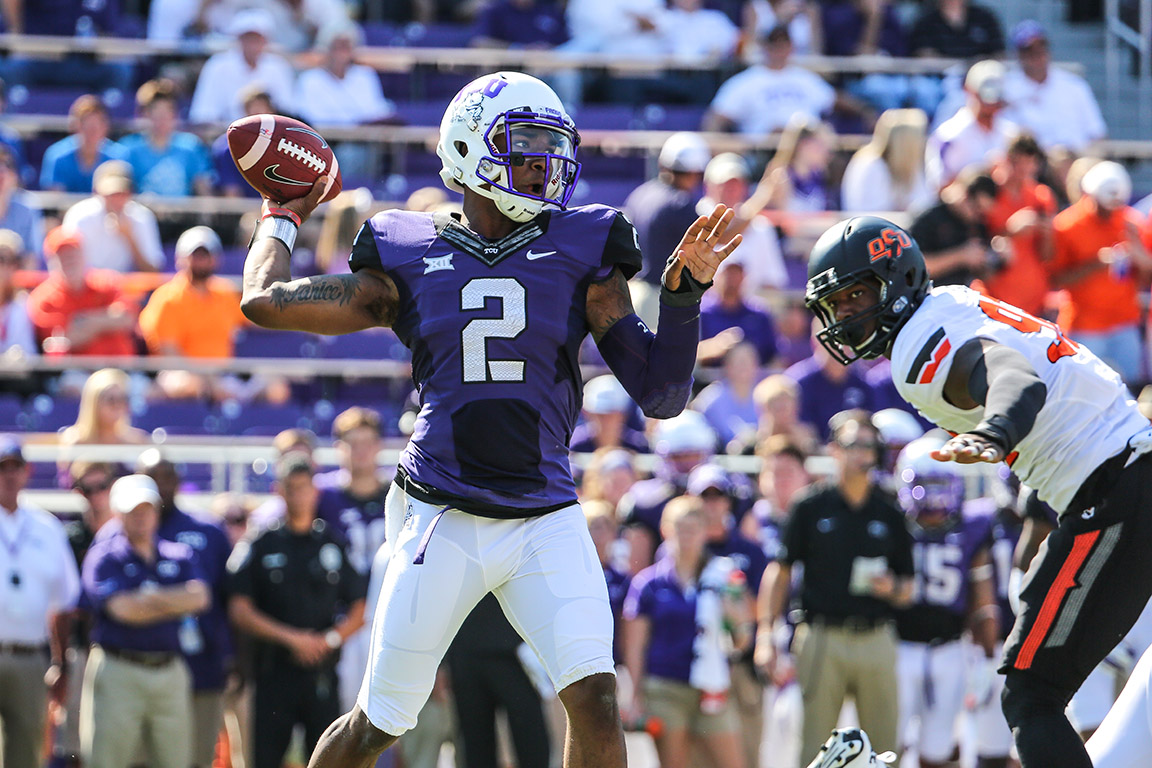

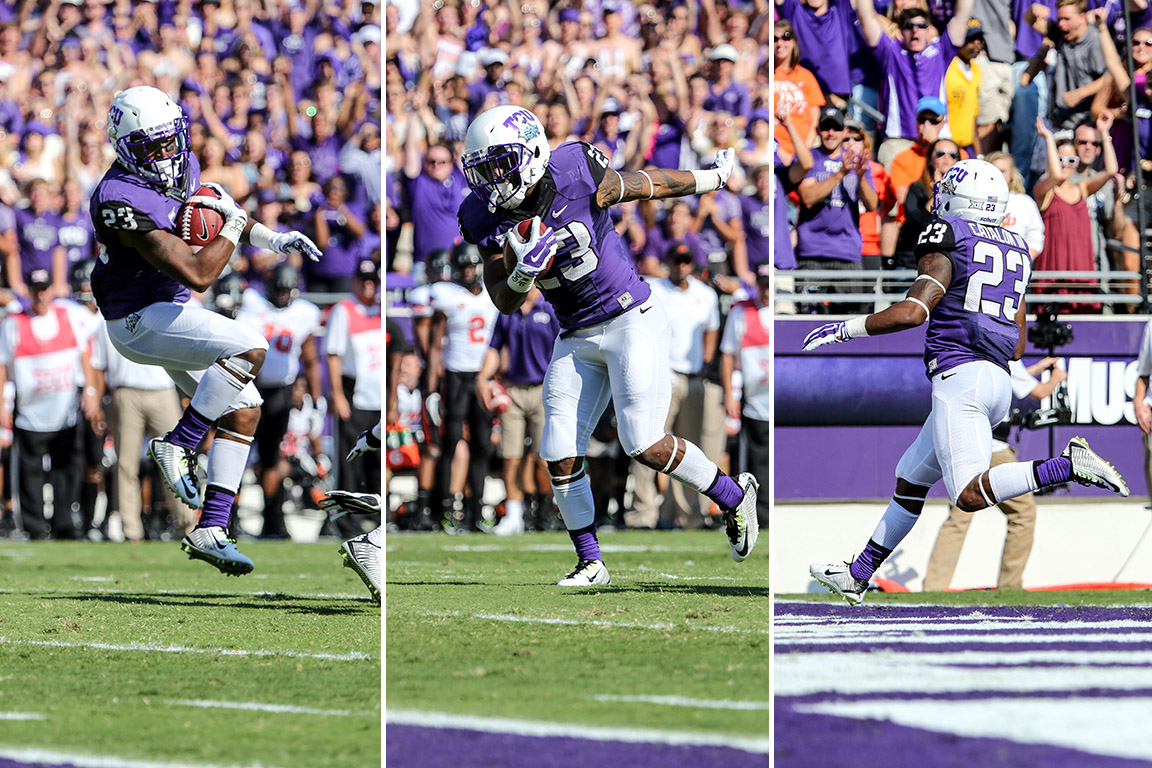
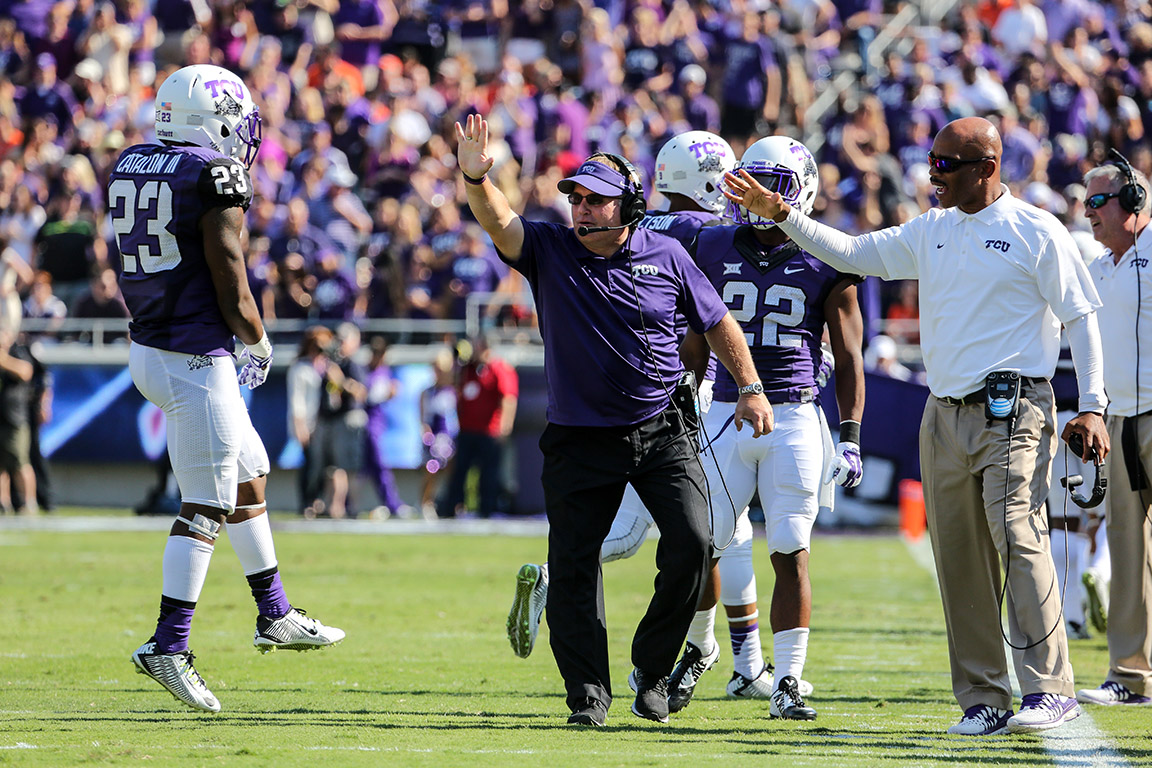


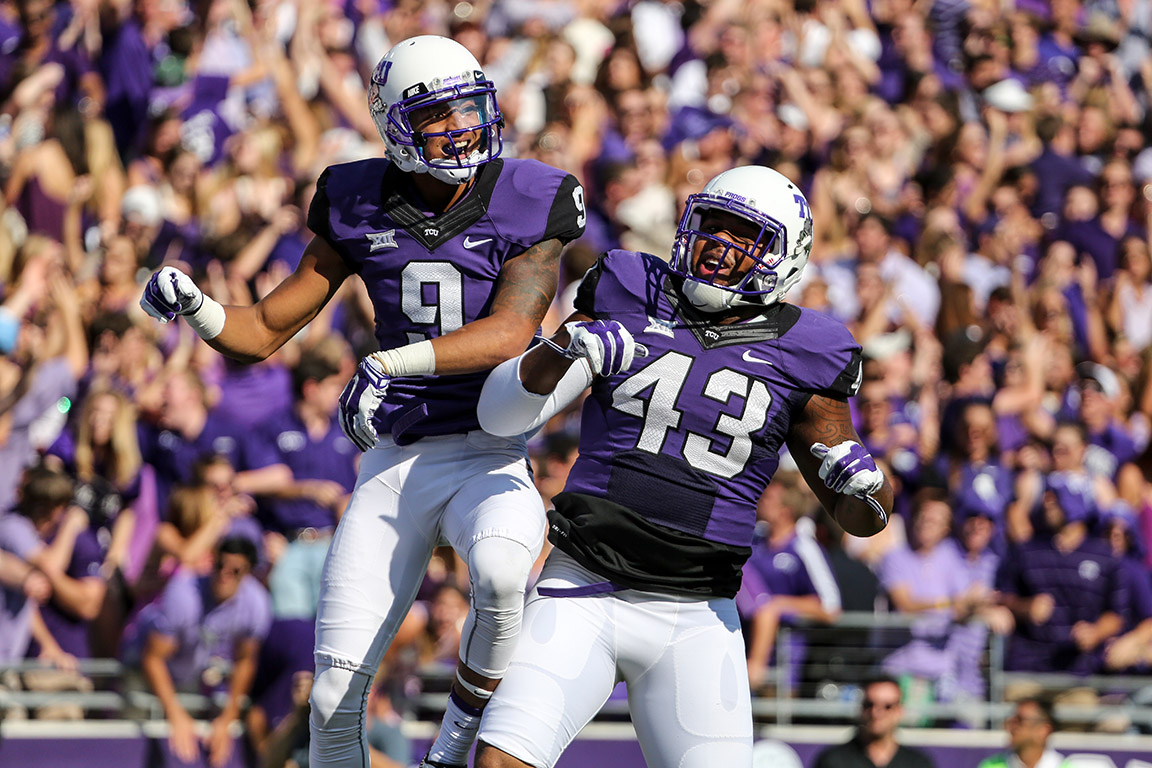


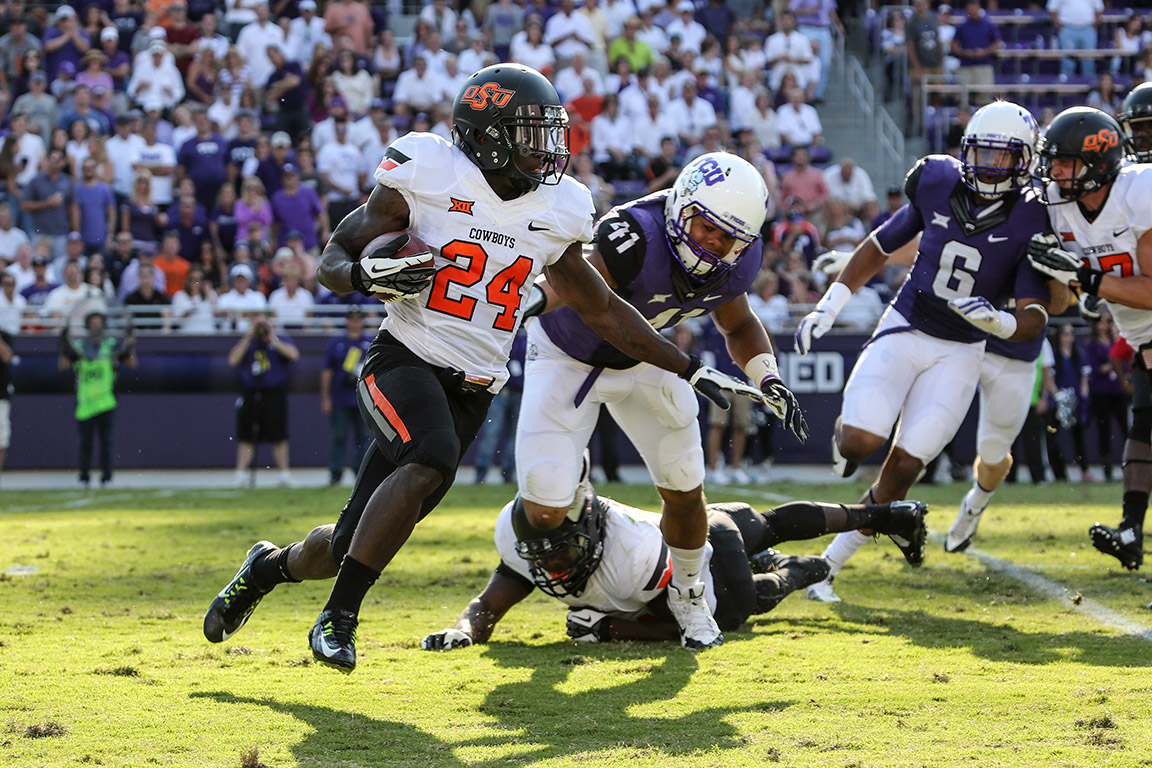
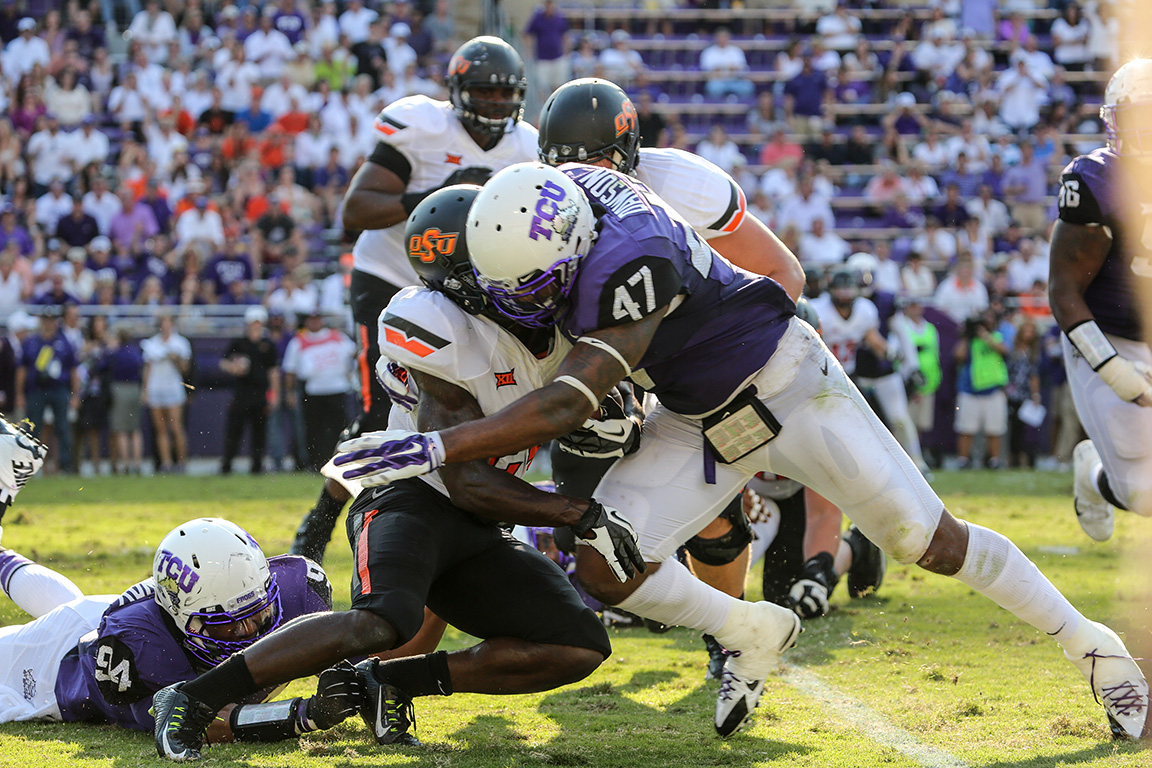
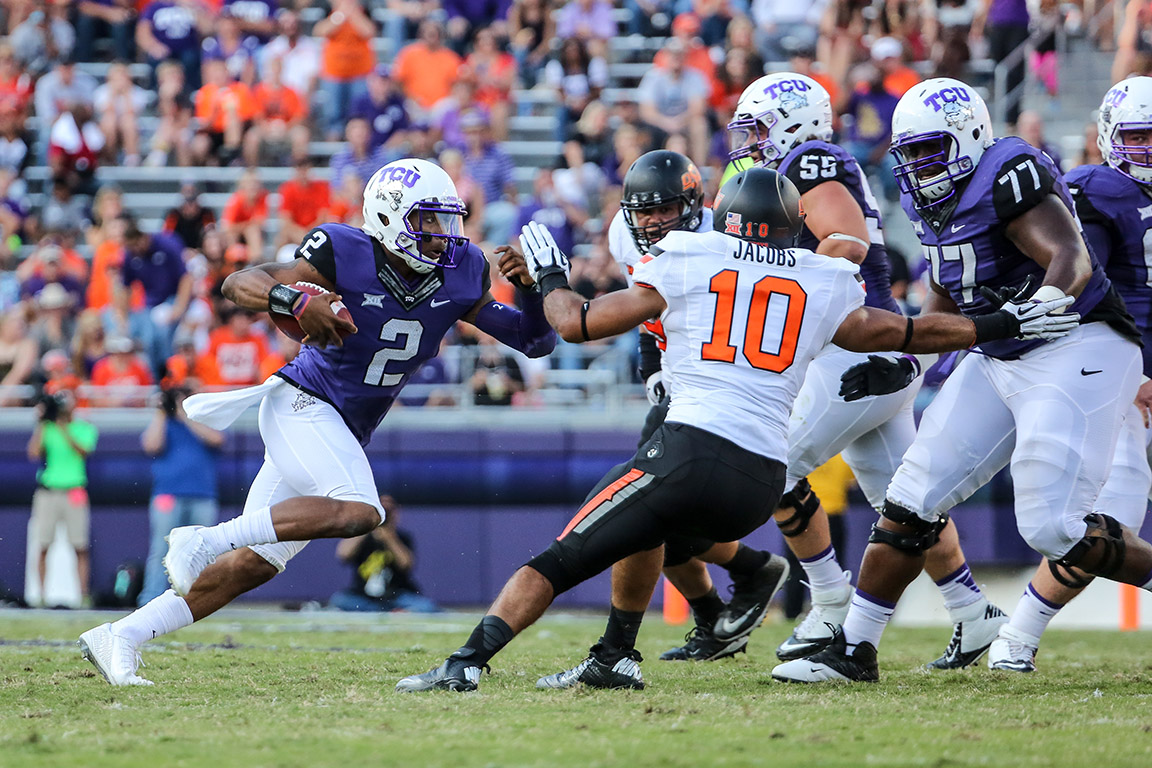
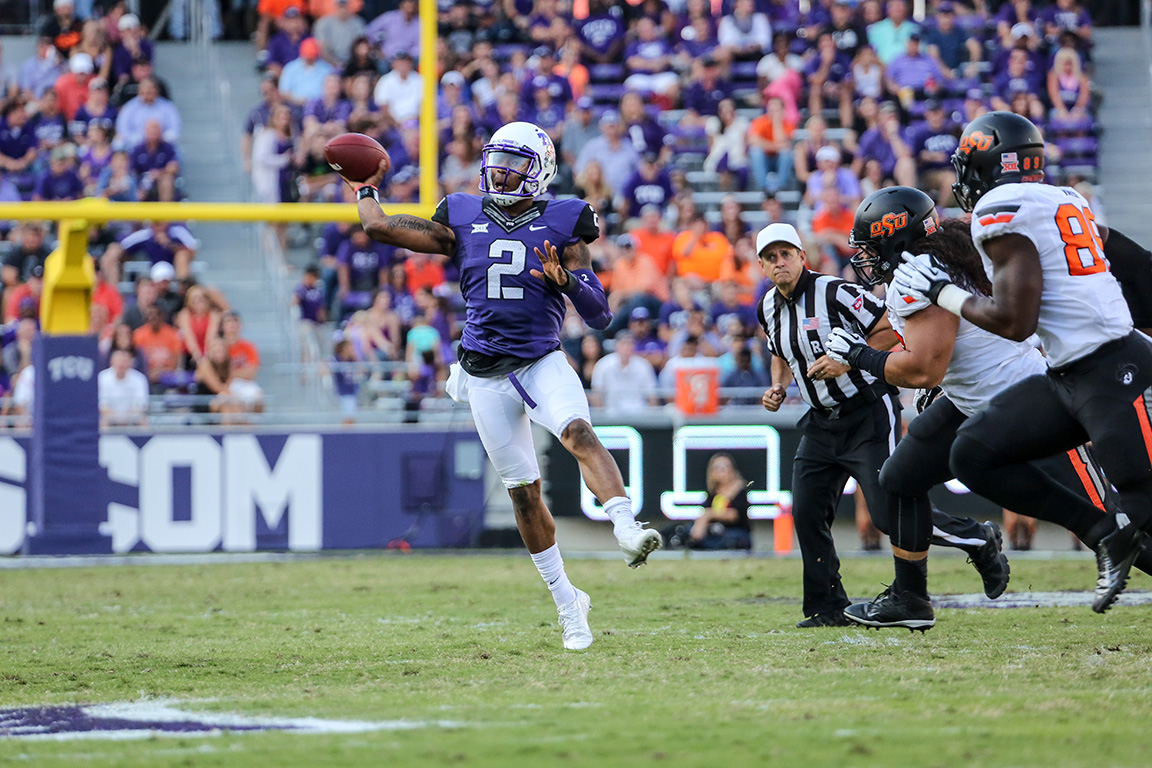

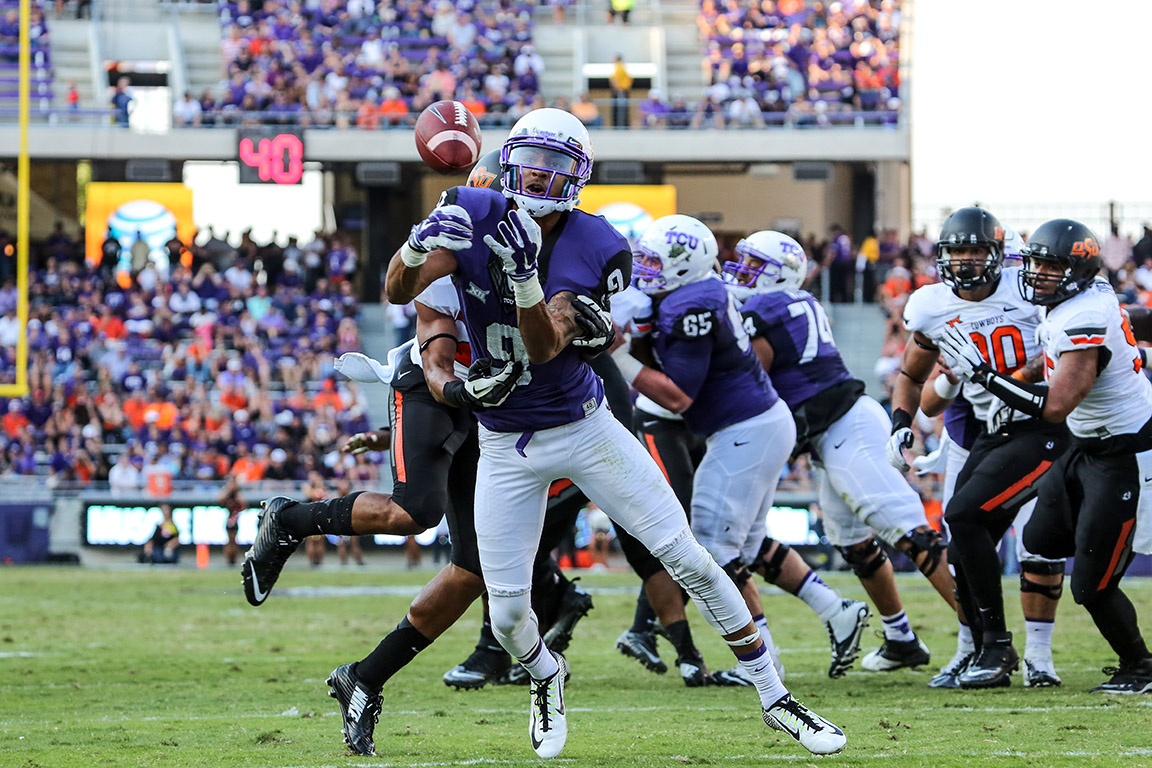
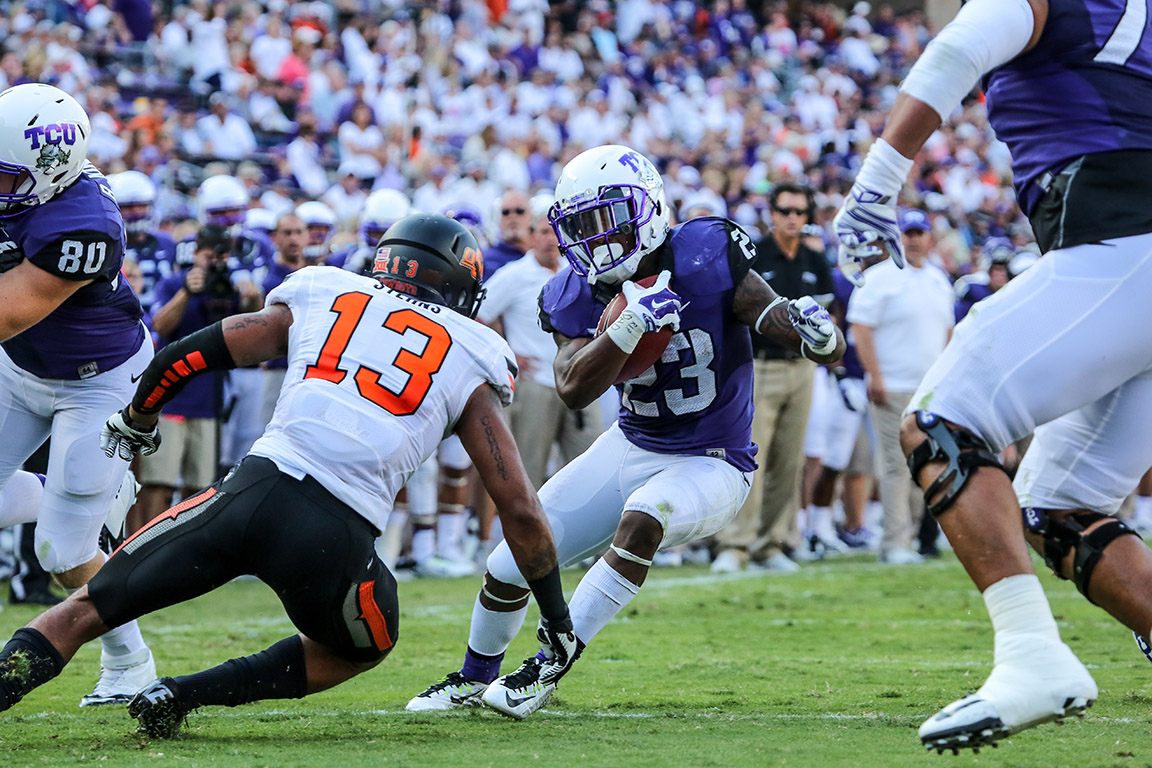

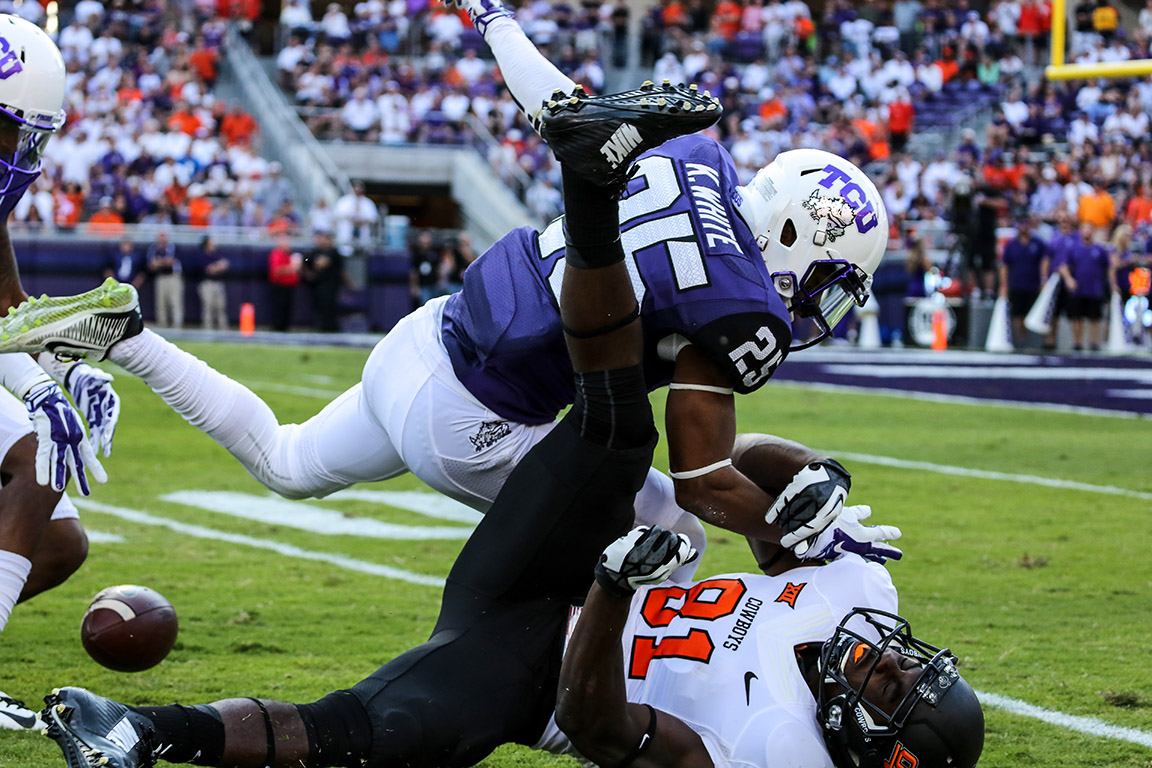
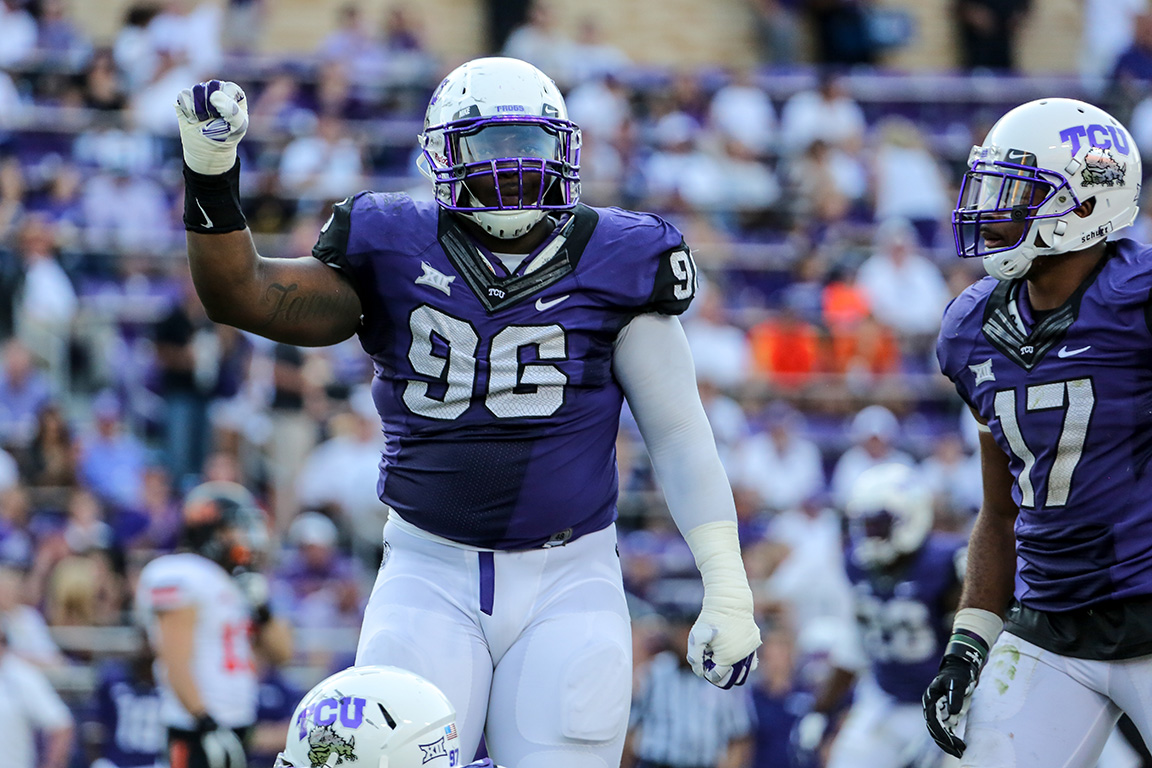
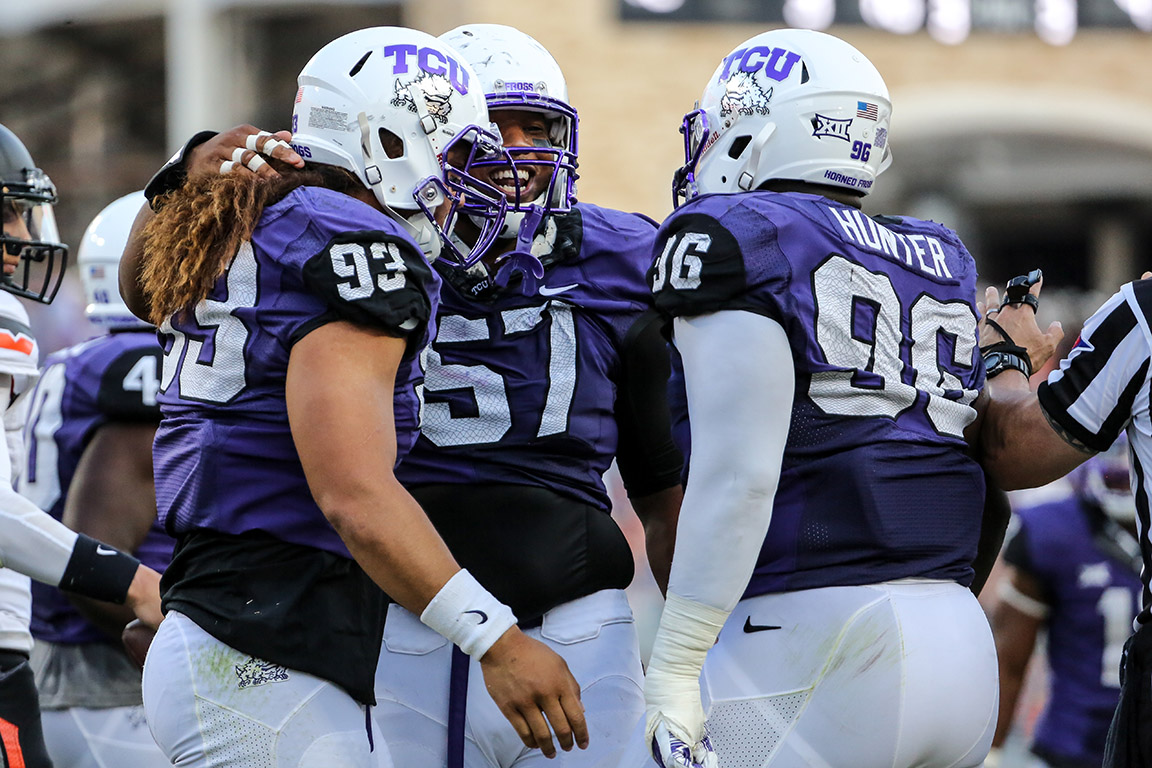
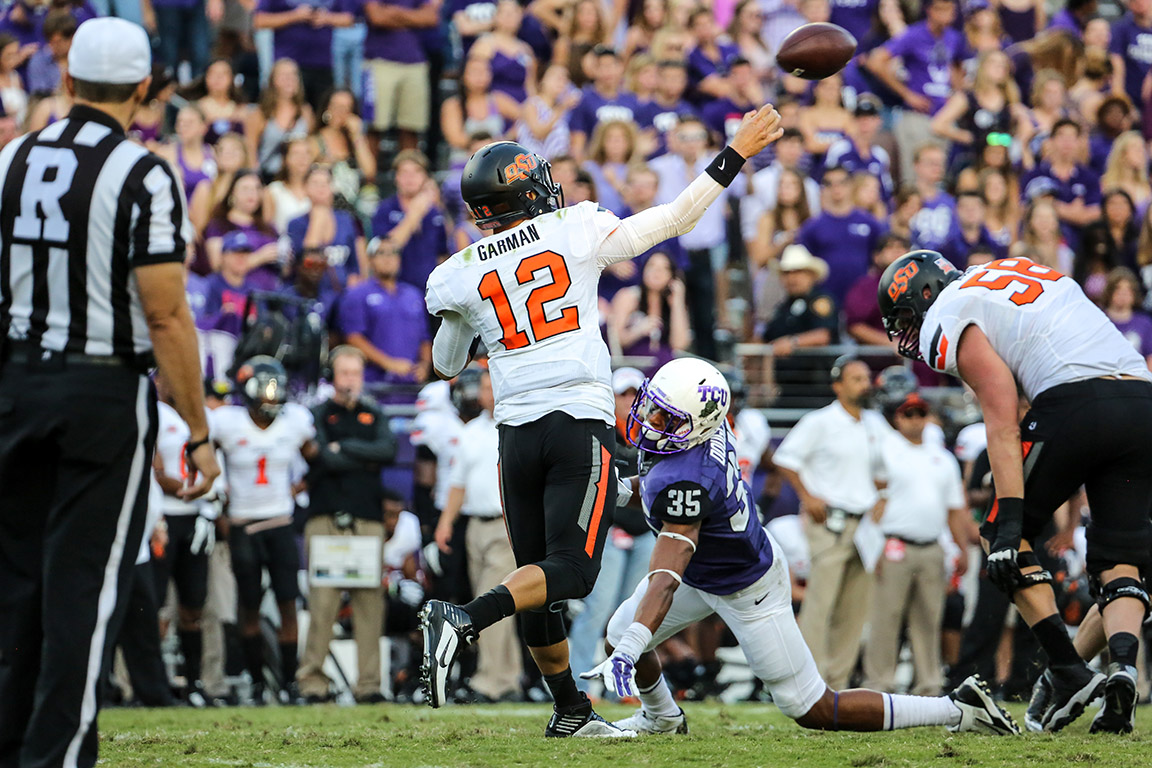
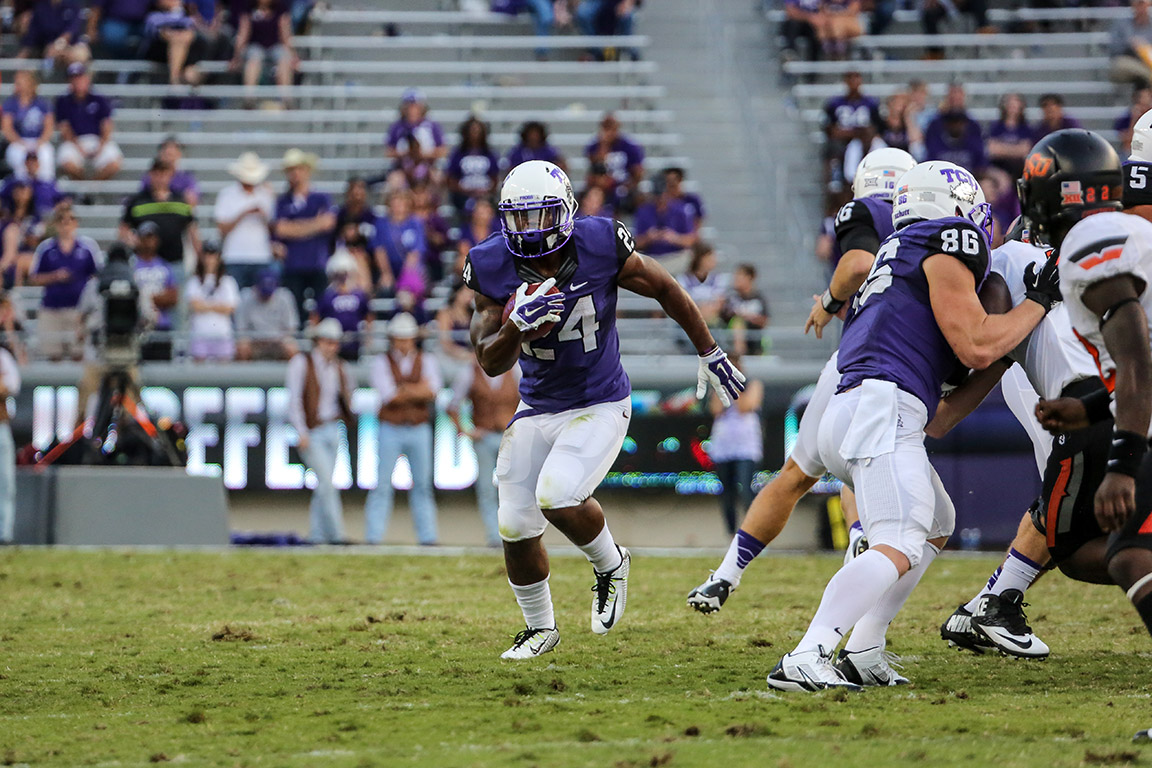
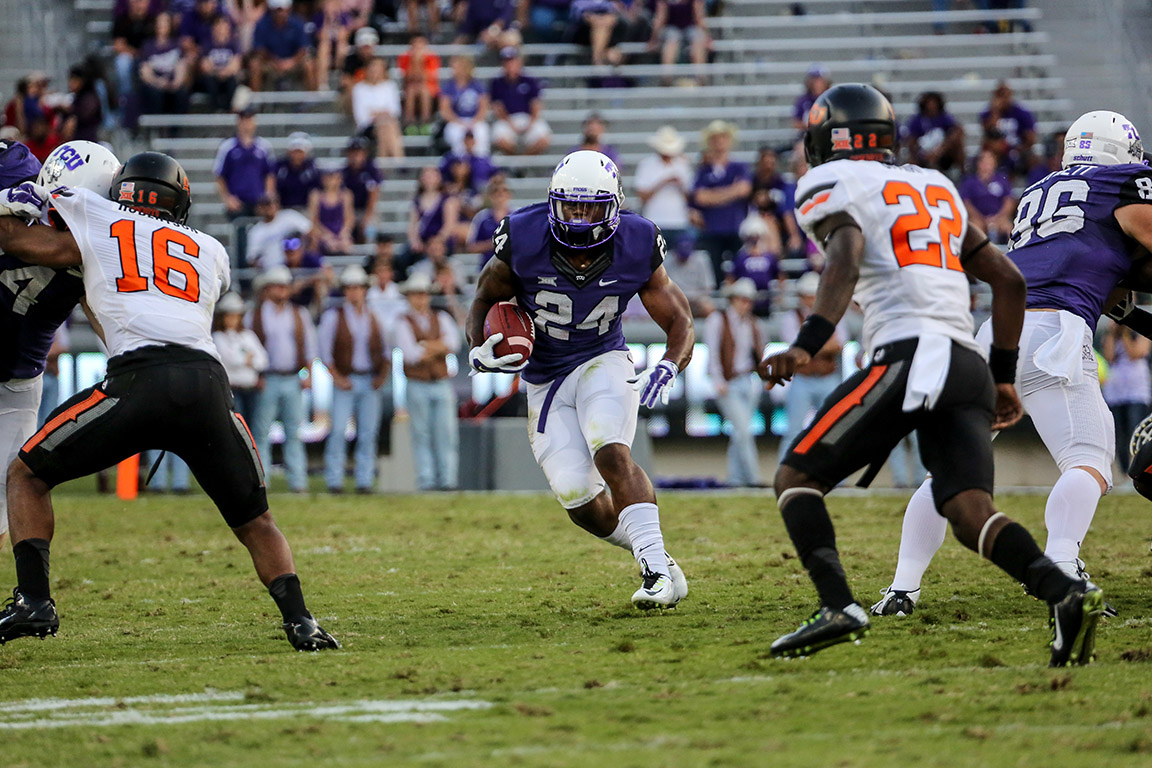
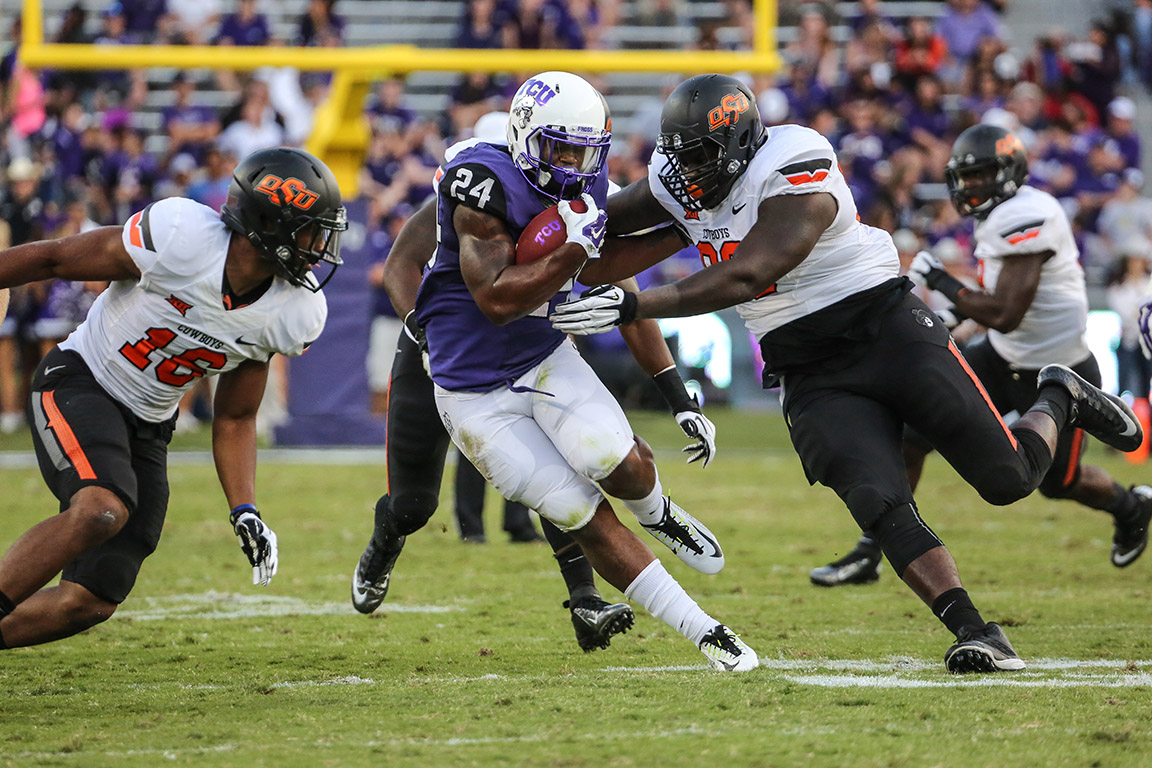
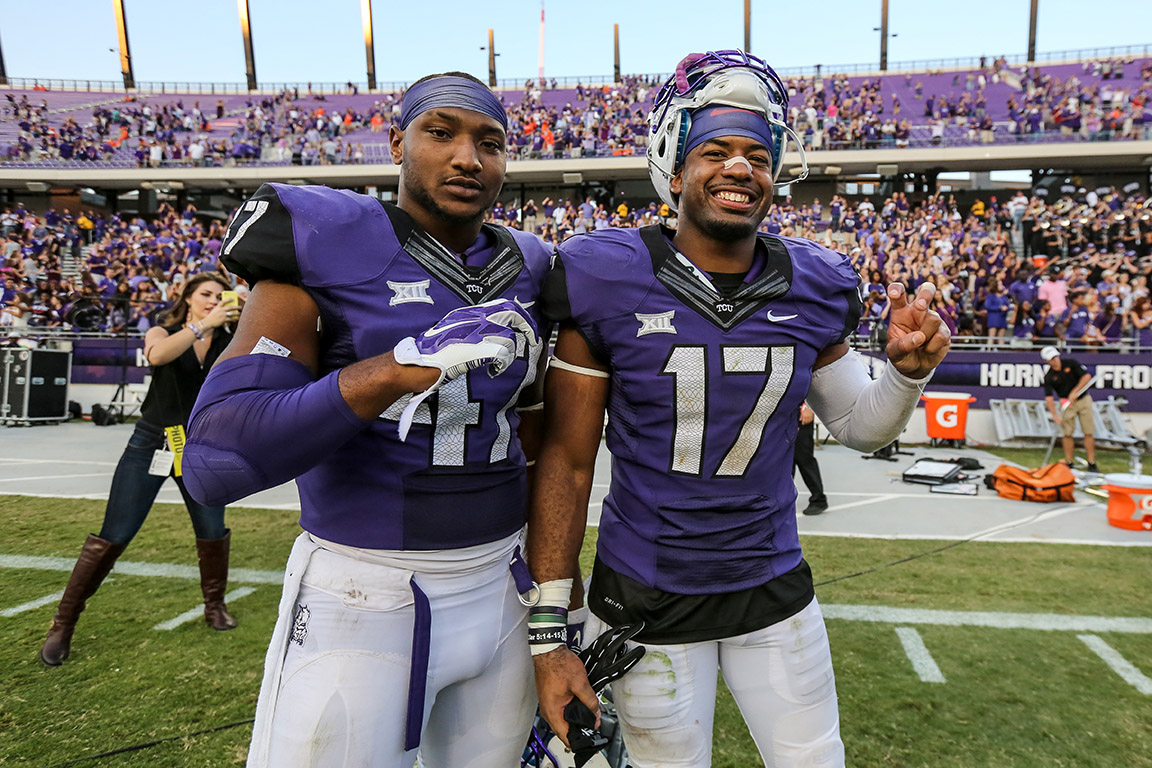
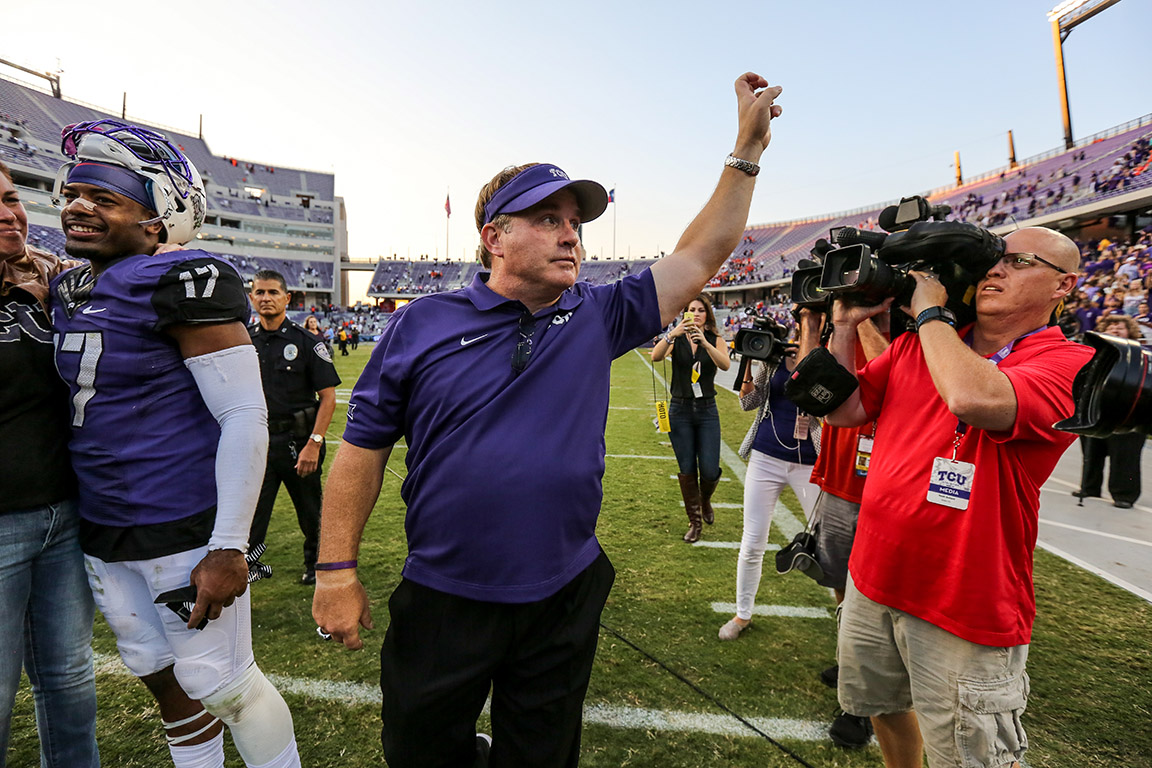
In the past year that I've been shooting games I really try my best to keep up with the action as it's happening. Of course I keep track of the situational stuff such as downs and yardage as well as the clock, but sometimes aspects of the game aren't so obvious from the sidelines such as stat lines and approaching milestones. Sure, I may be aware TCU quarterback Trevone Boykin has thrown the ball to wide receiver Josh Doctson several times, but as a photographer without a stat sheet in front of him I may not be aware he's set a school record for receiving yards in a game and if I haven't snapped a photo of Doctson reflecting that story line I'm not doing the best job possible.
To make sure this doesn't happen I've started listening to the radio broadcast of the game. Luckily I have a phone (HTC One M8) that has an FM player built in and I've yet to encounter any frequency issues.
During this particular game at Amon G. Carter stadium in October this really came in handy. The TCU broadcasters pointed out that linebacker Paul Dawson had recorded about 10 or 11 tackles by the second quarter and was on pace to break a school record. Knowing that would be an interesting story angle, I started focusing in on Dawson (47) and more often than not he led me right to the ball and I ended up getting some great photos because of it.
I've listened to the game on the radio several times and it has been a big help. TCU has several track sprinters at the wide receiver position and rotates them in quite frequently. At the time of this game, Kolby Listenbee (7) was one of those receivers making lots of plays when he entered the game and I was able to keep track of him when he was on the field because the broadcasters always made sure to note when he entered the game. Again, a great aid.
When people ask me if I have any tips on shooting sports, I'll definitely be sure to tell them to bring a pair of headphones and listen to the radio broadcast--it's a huge help.
